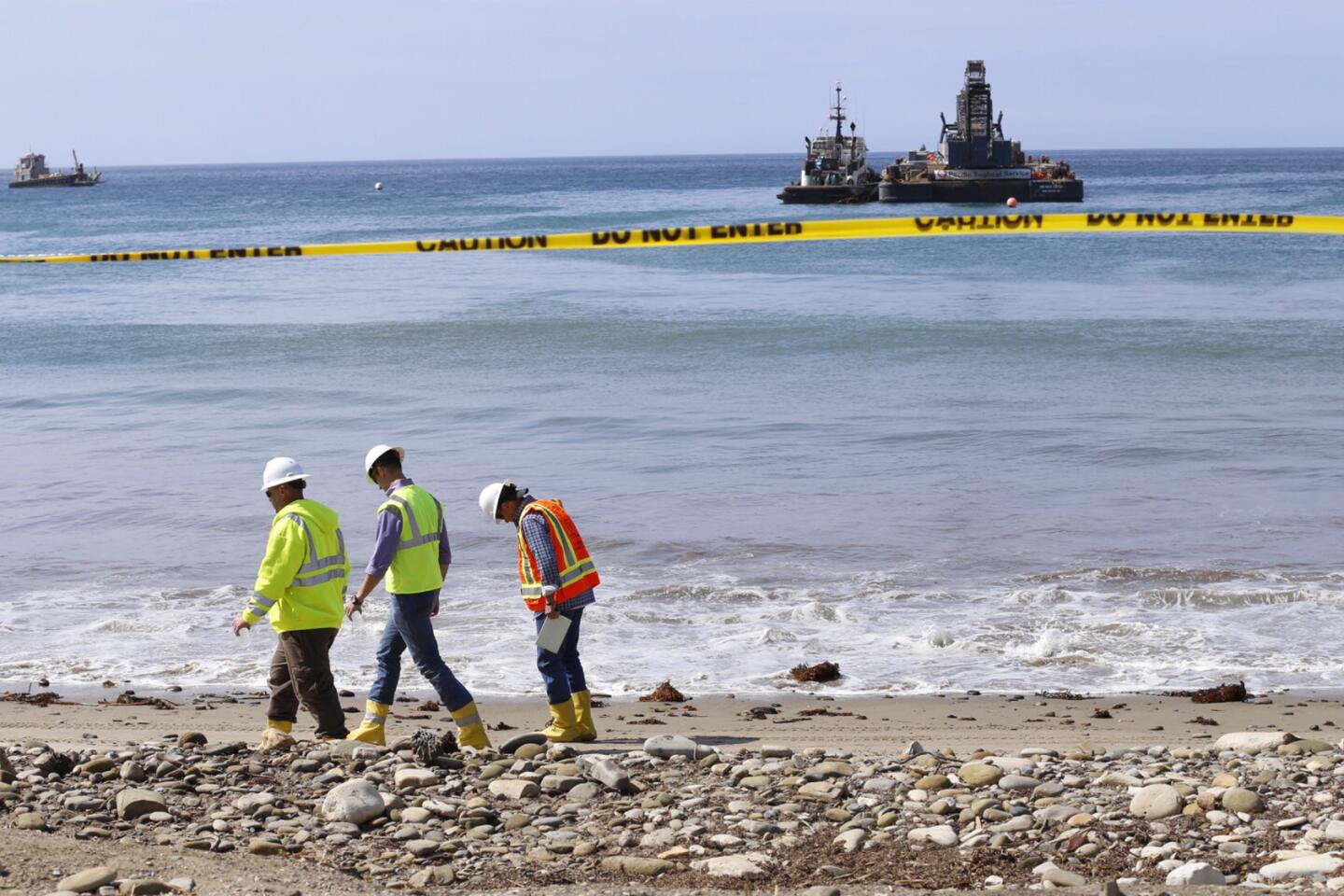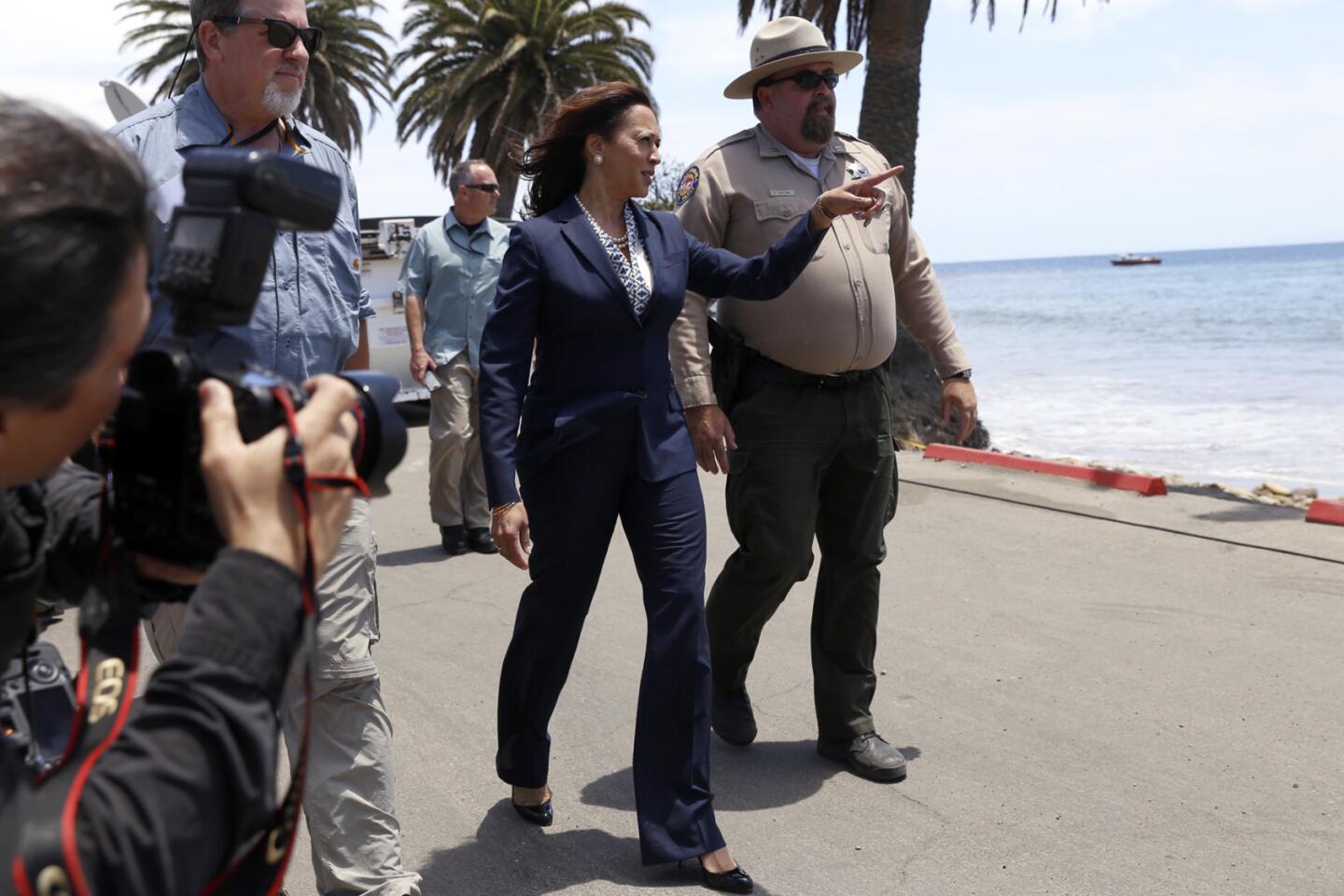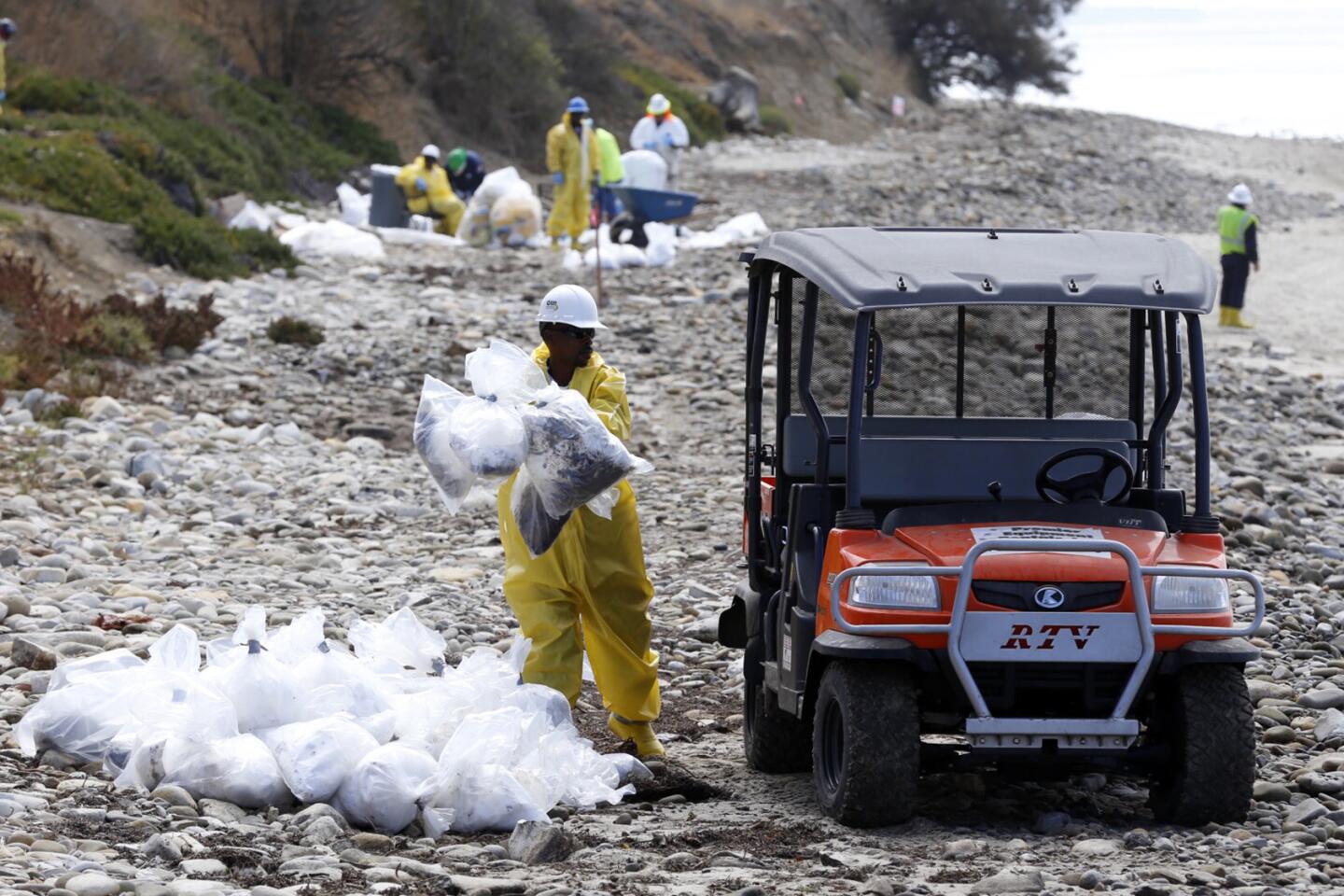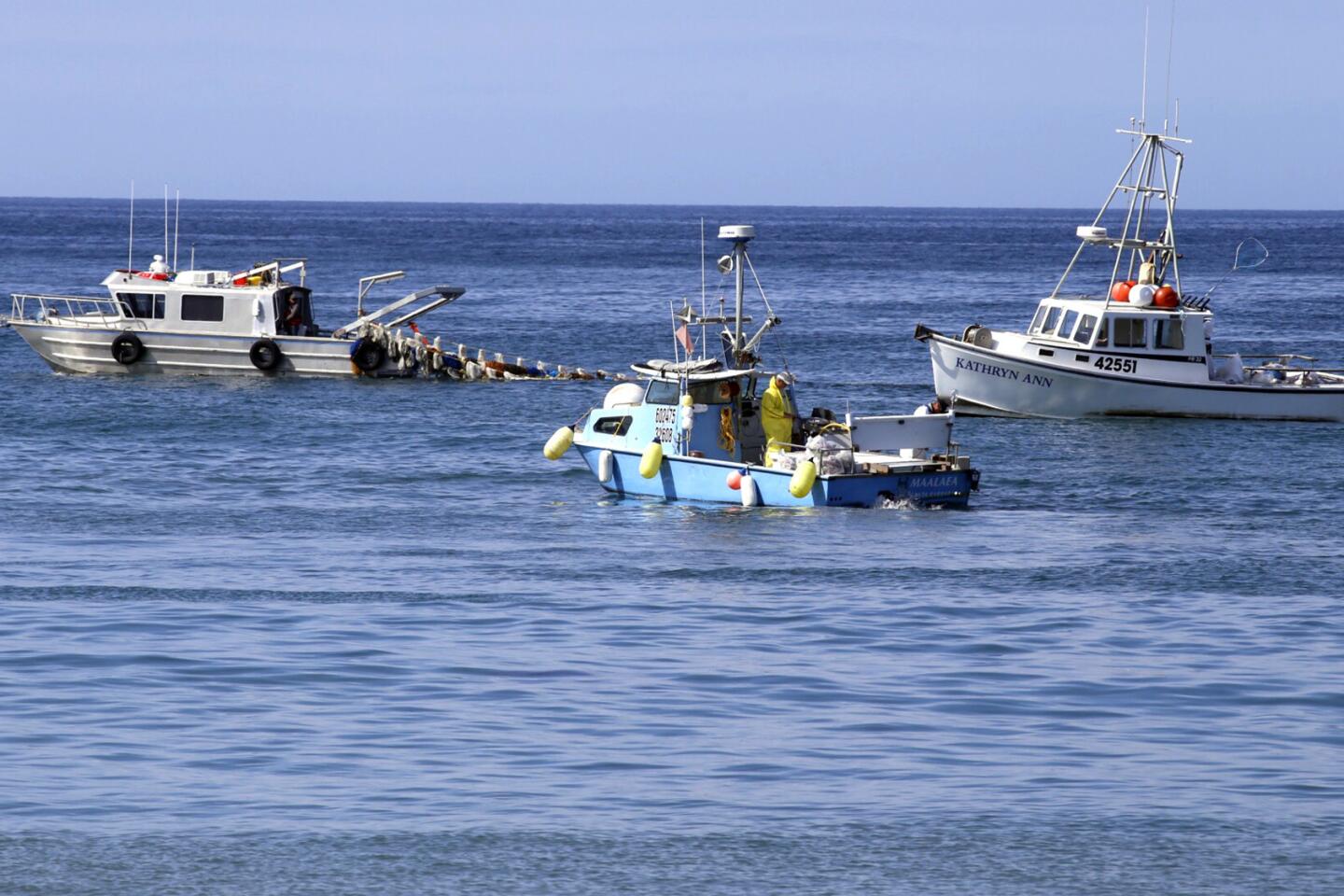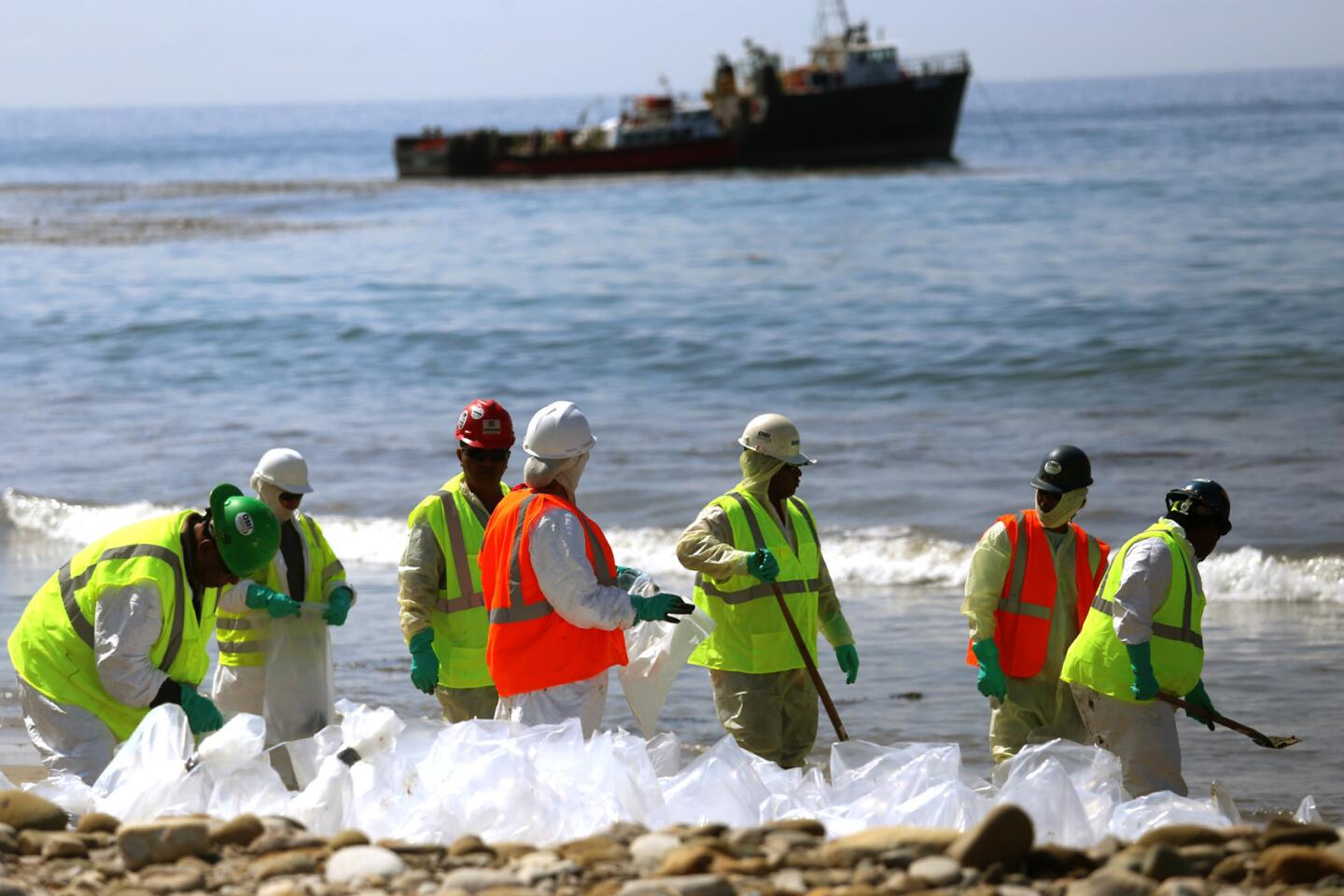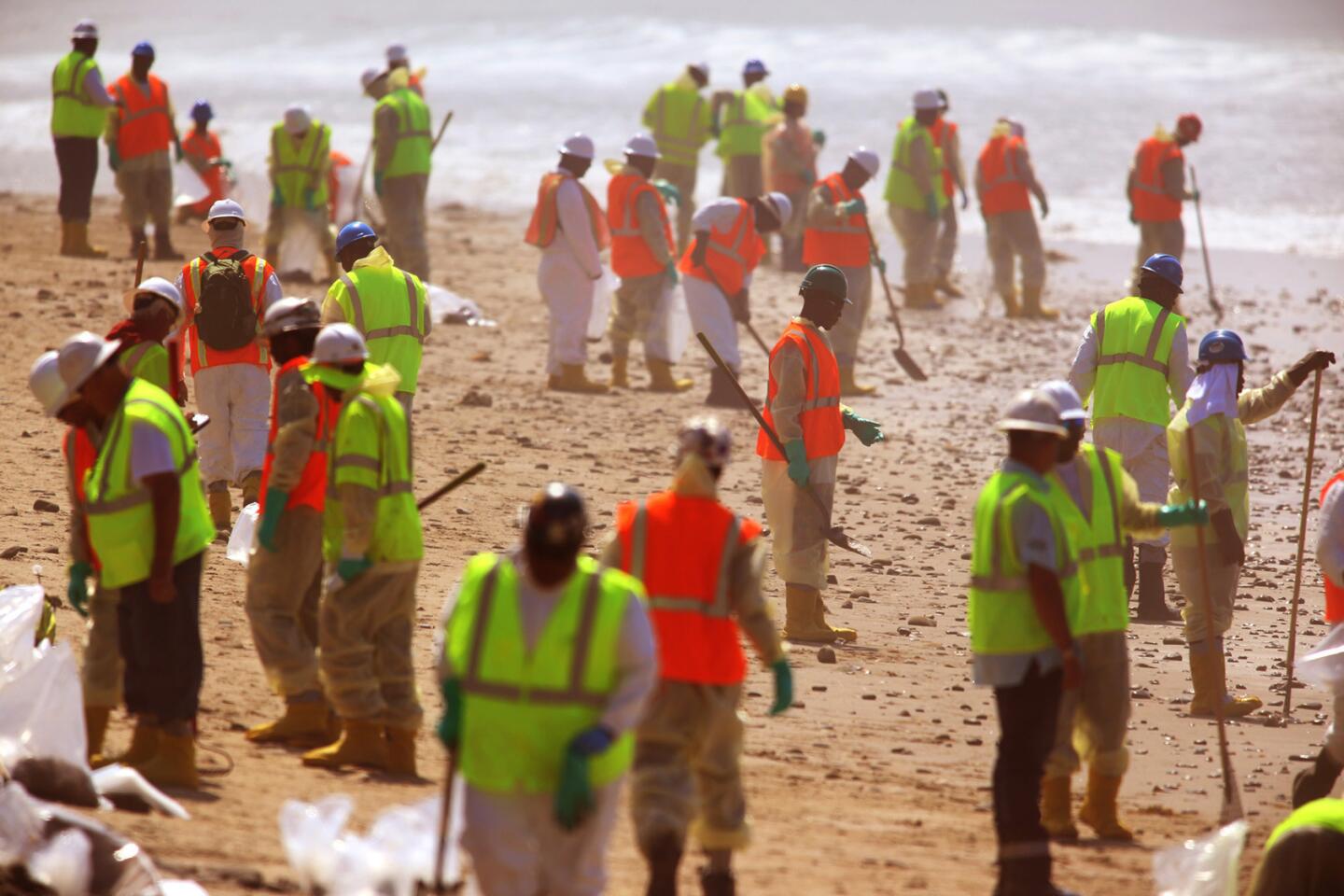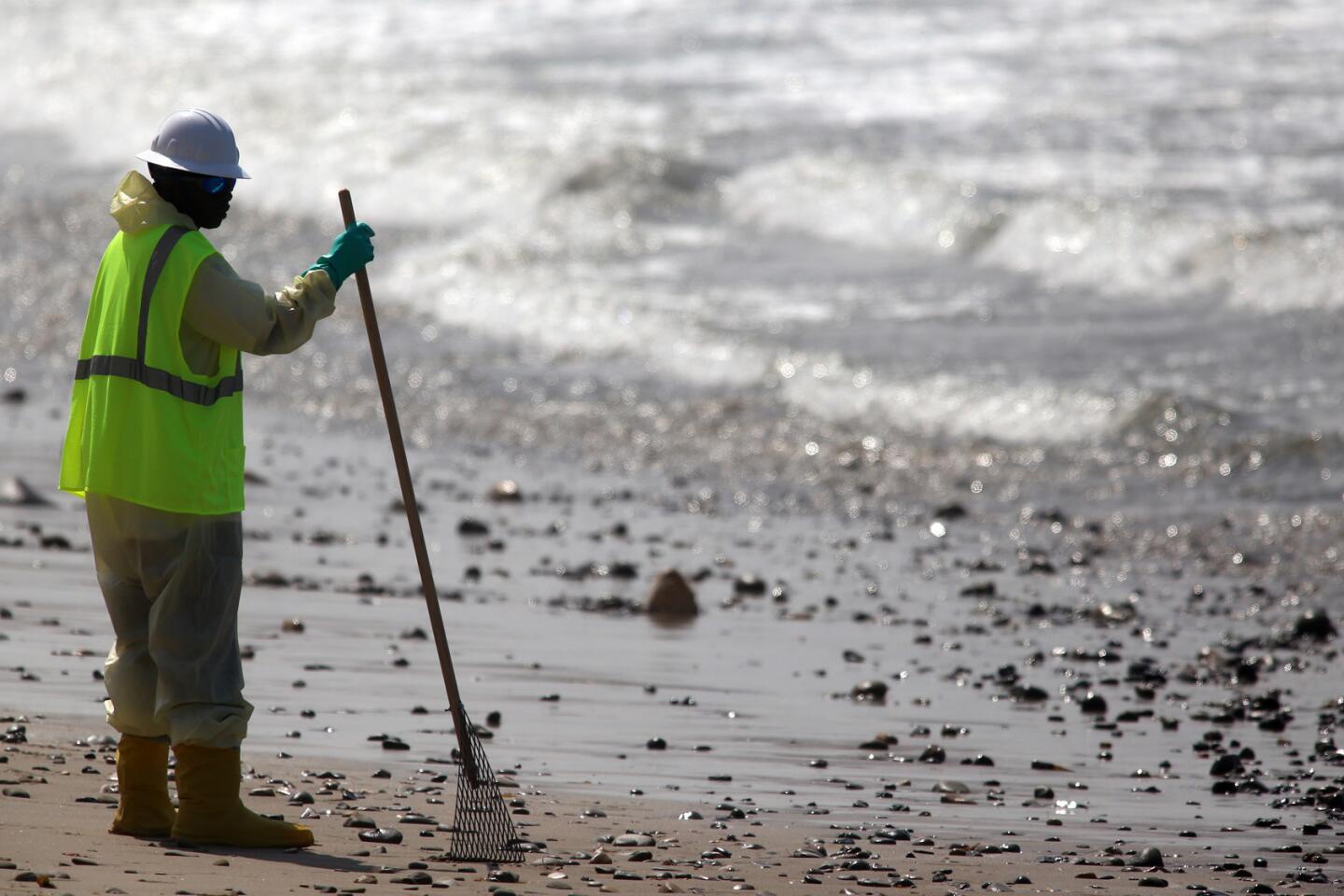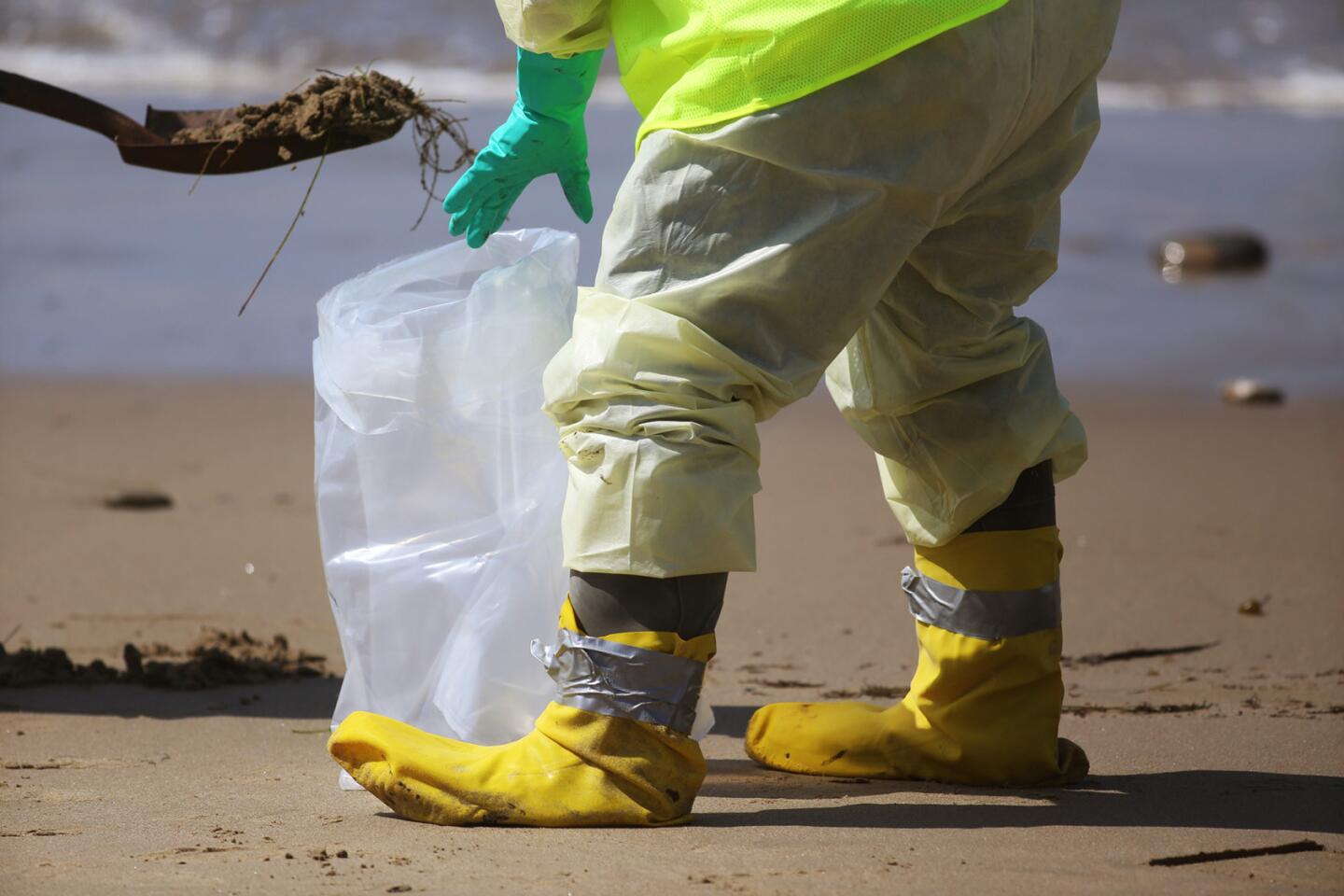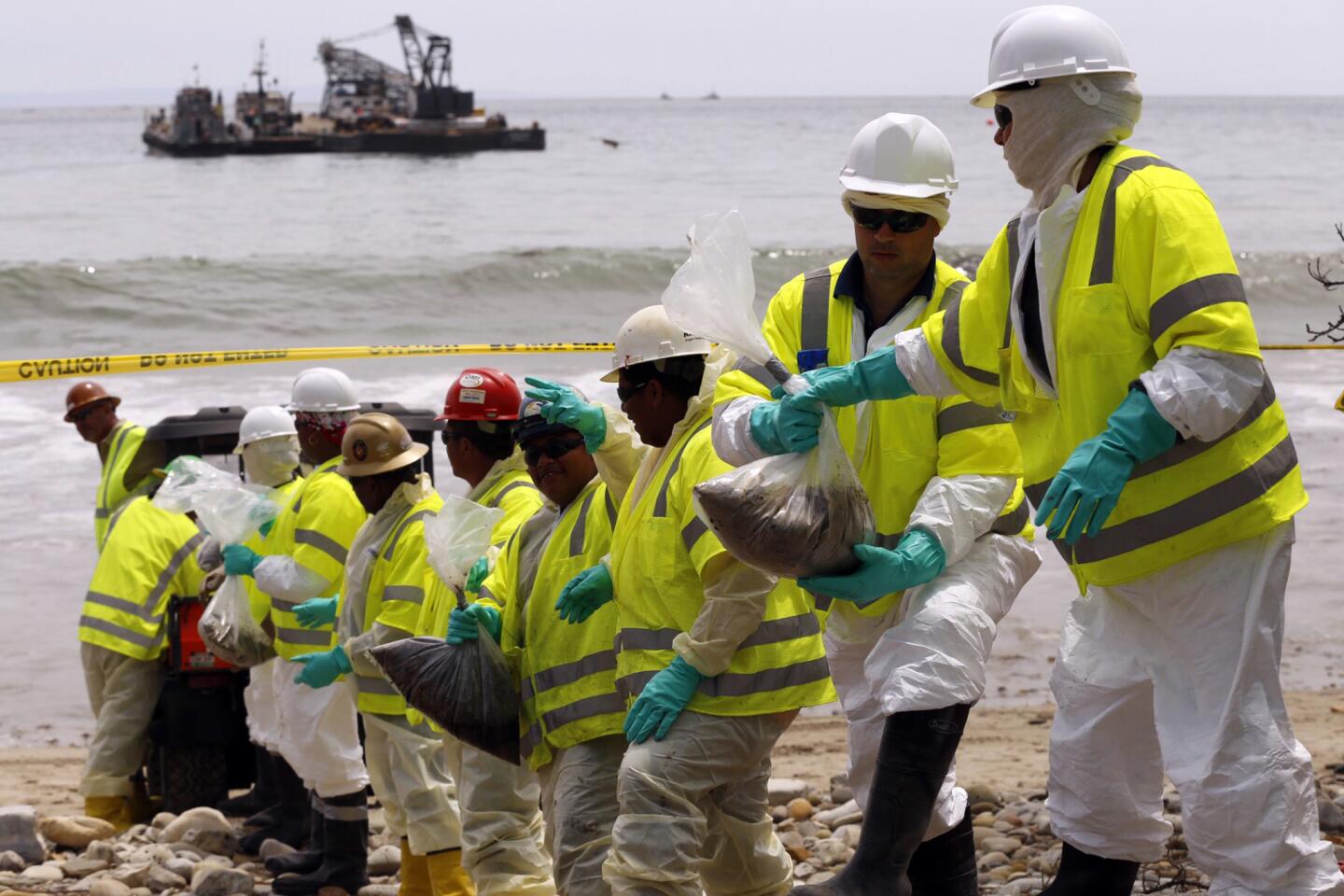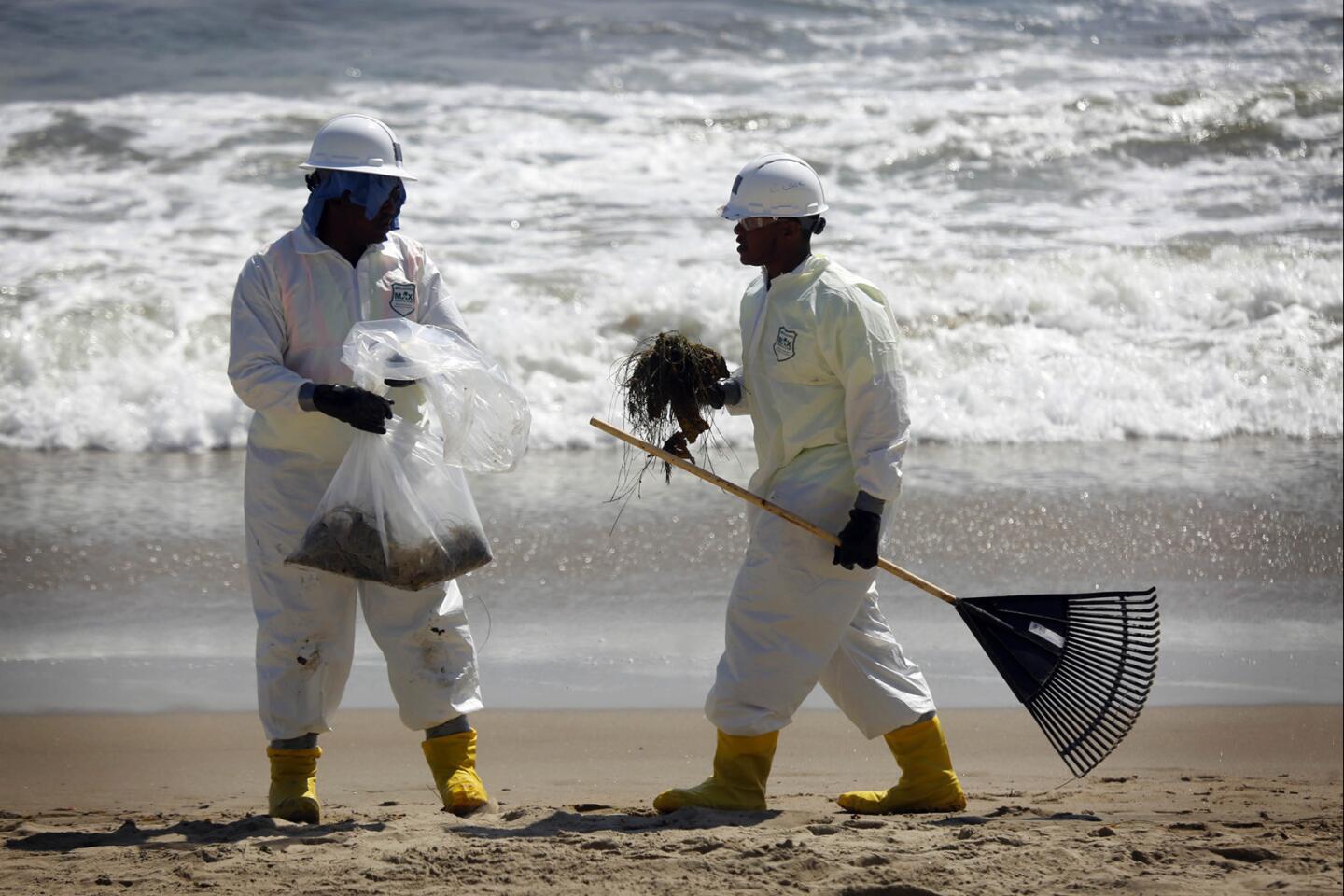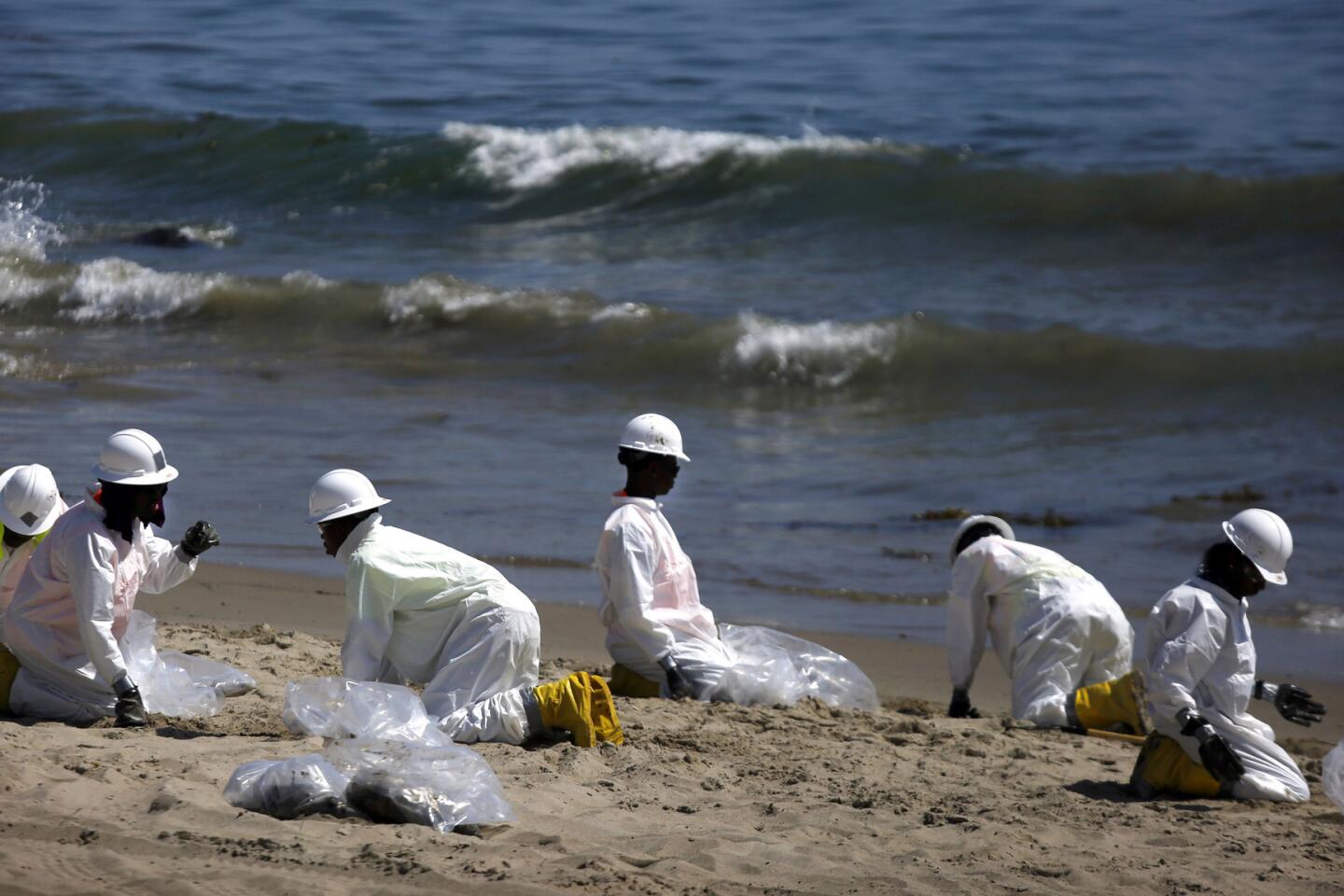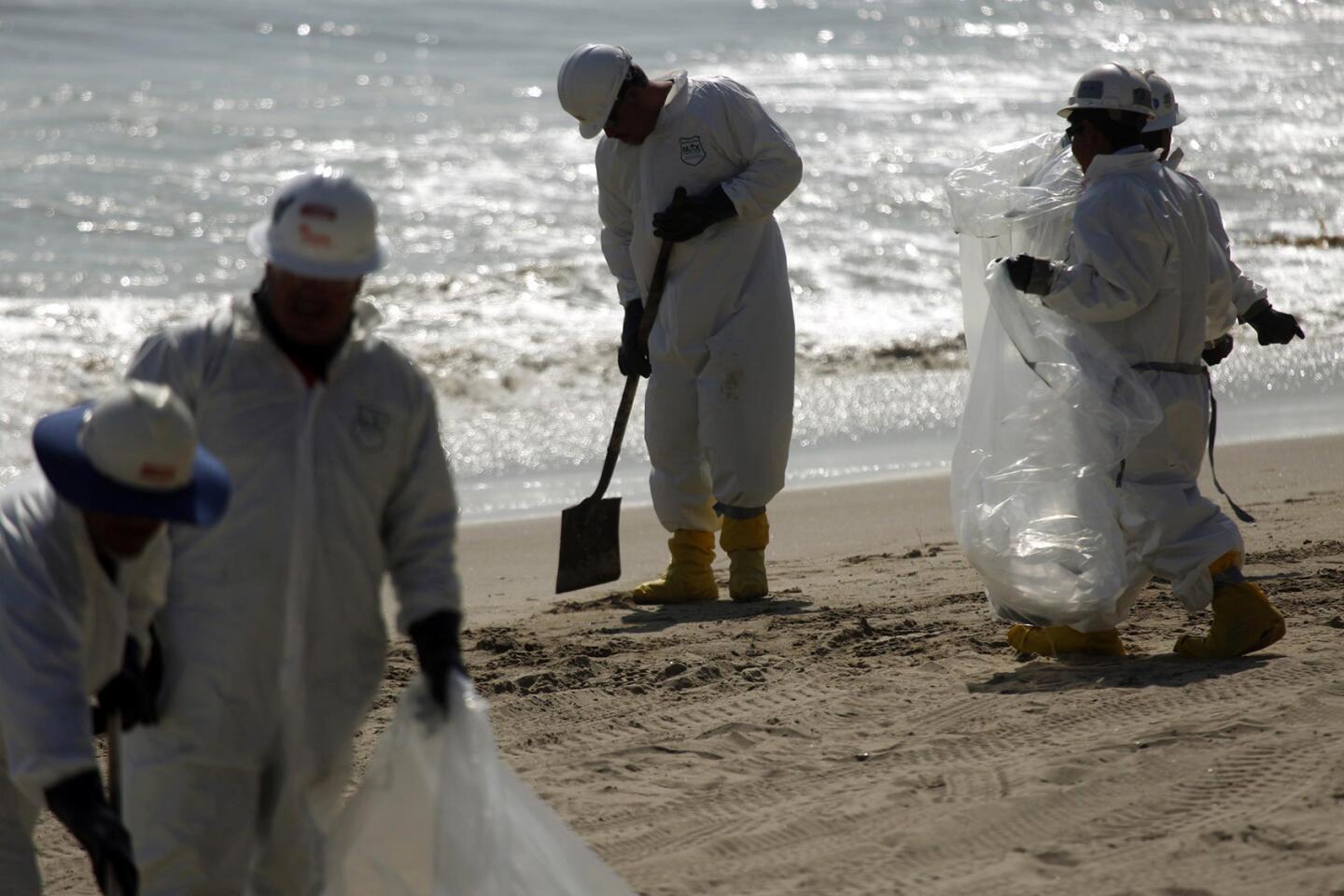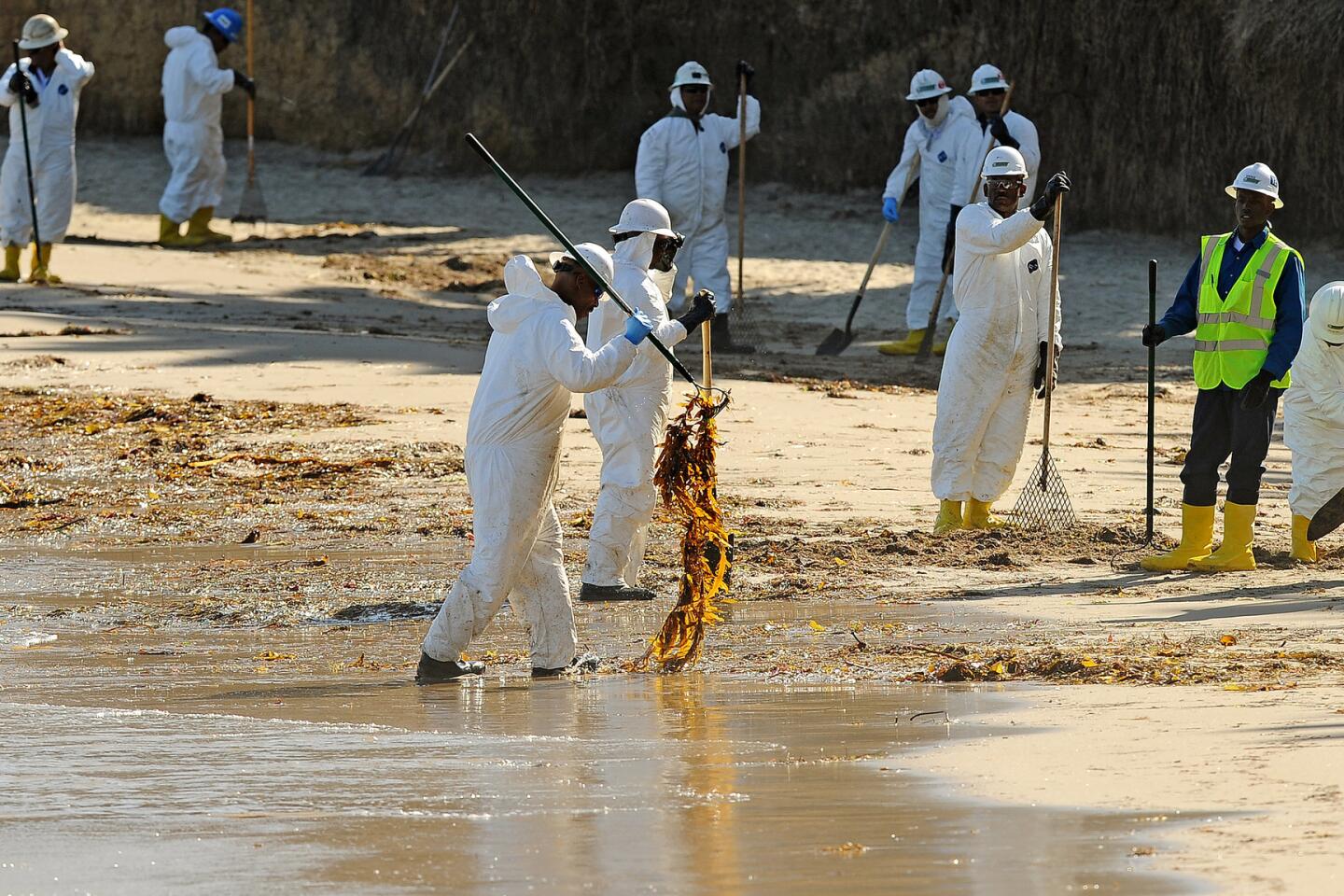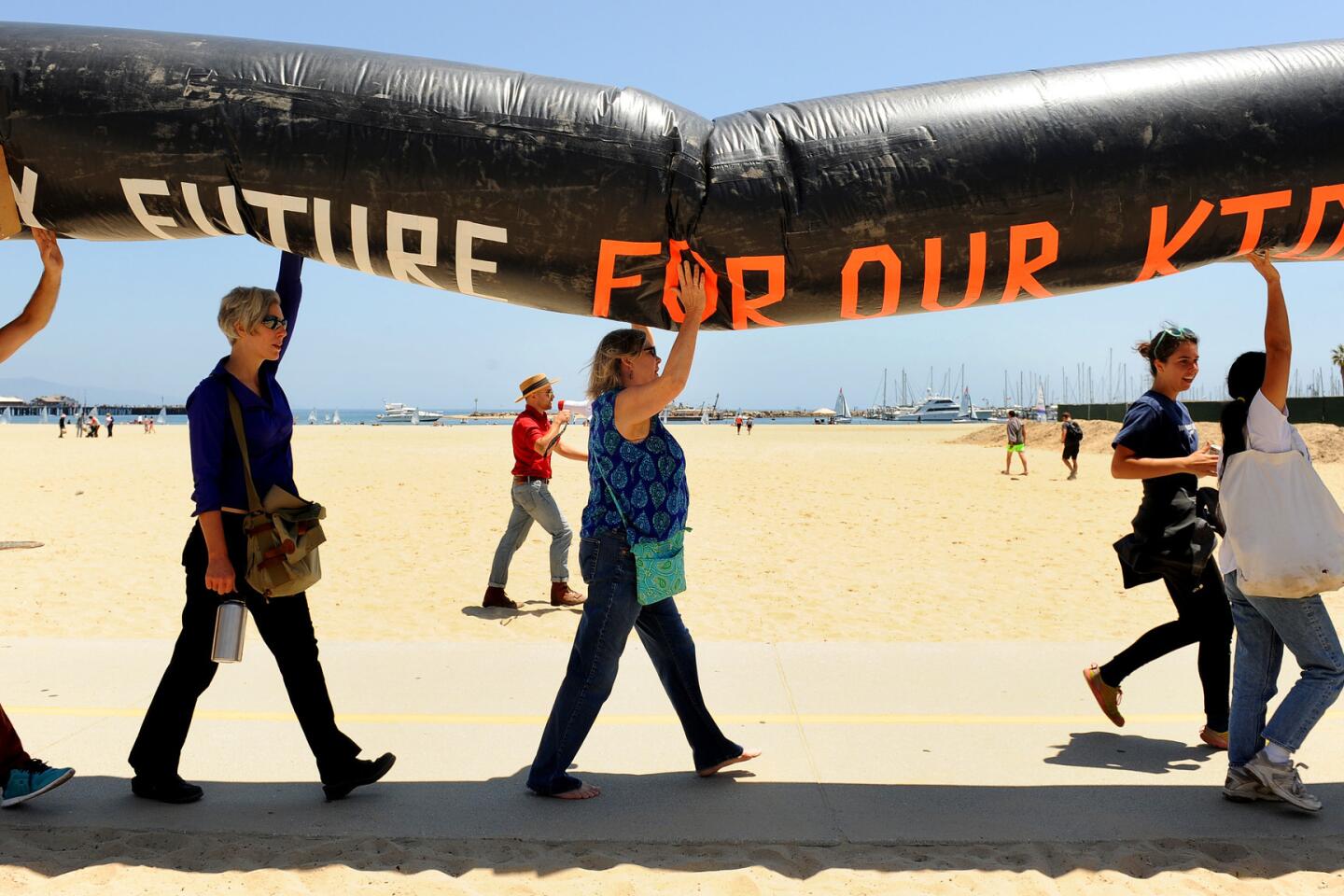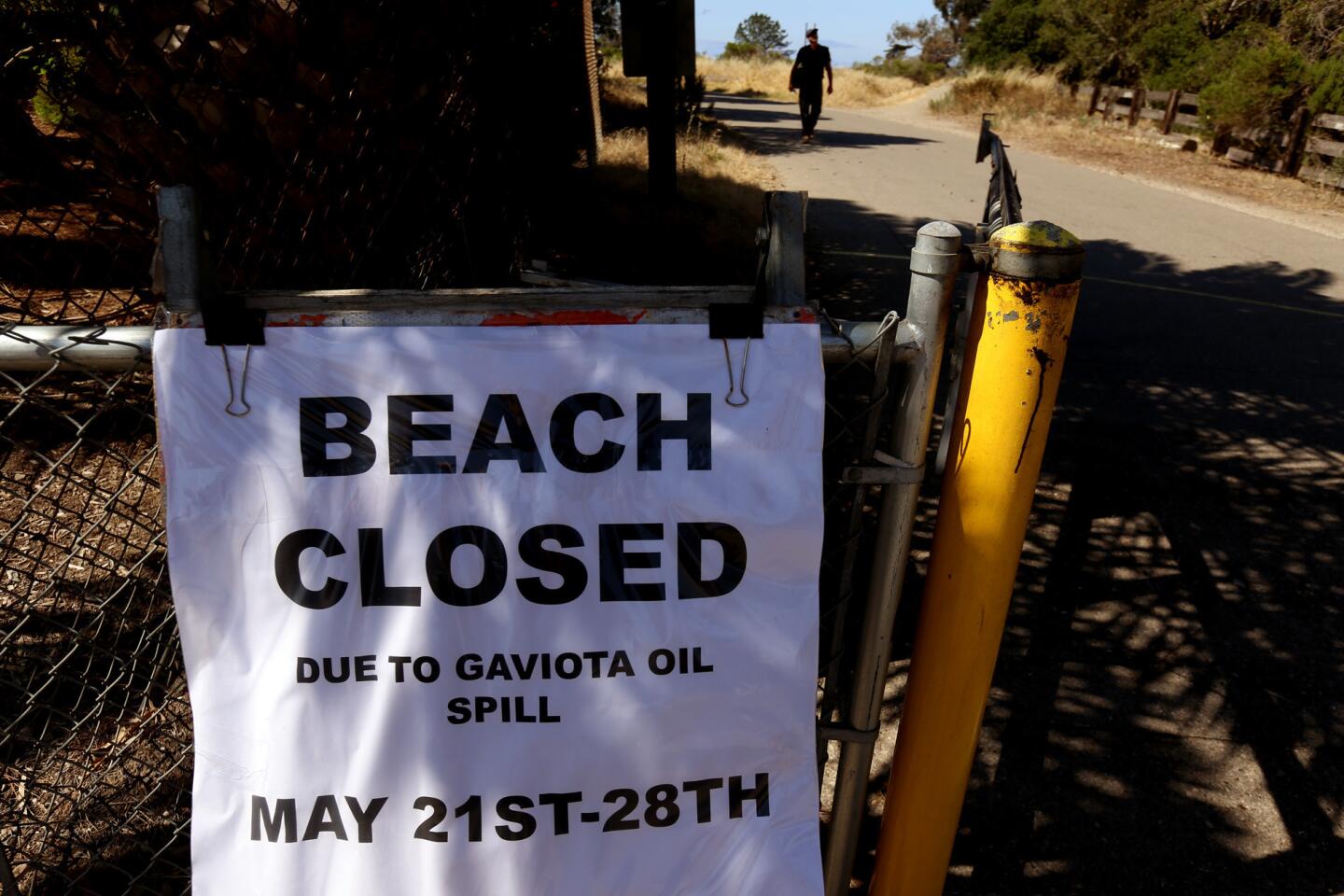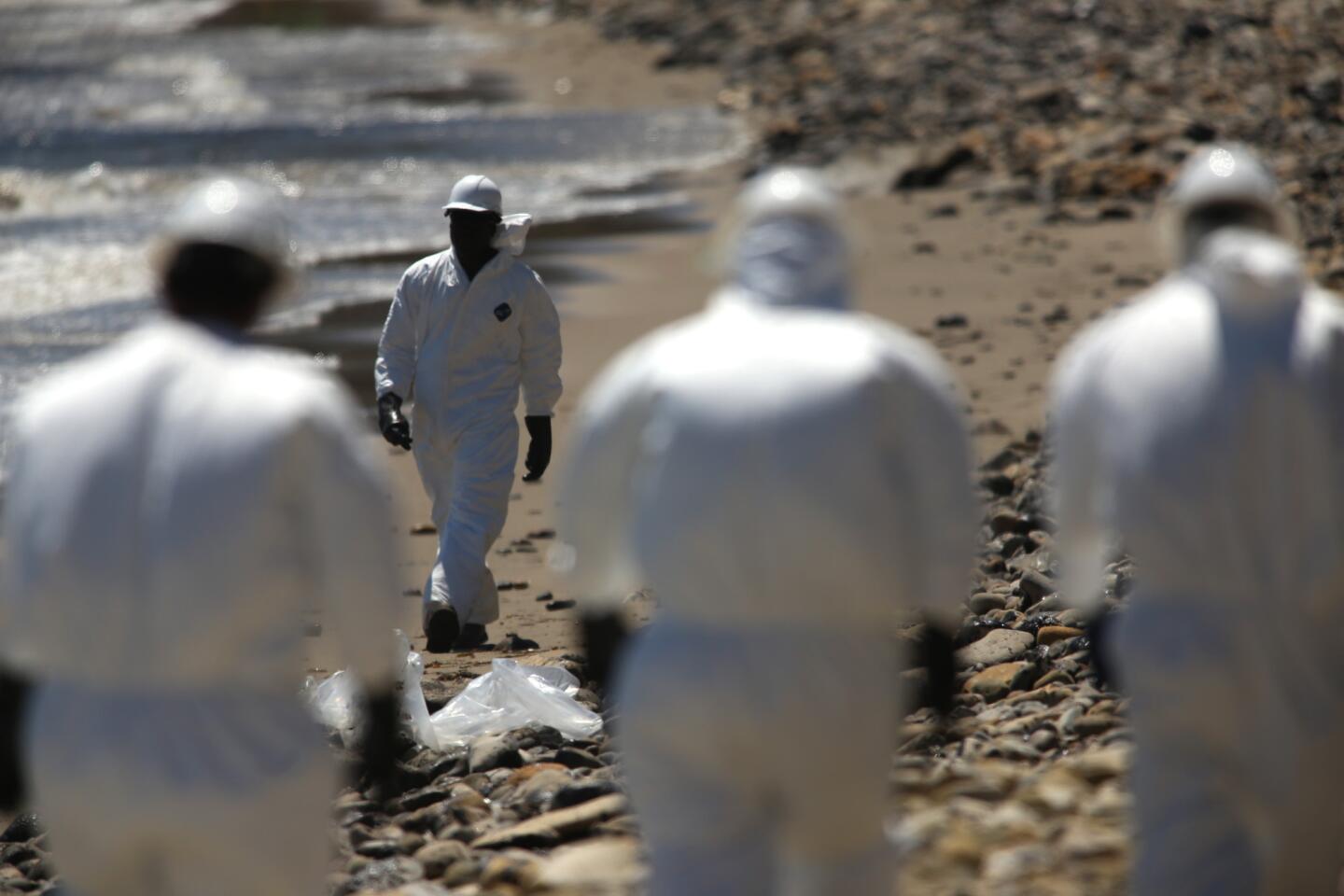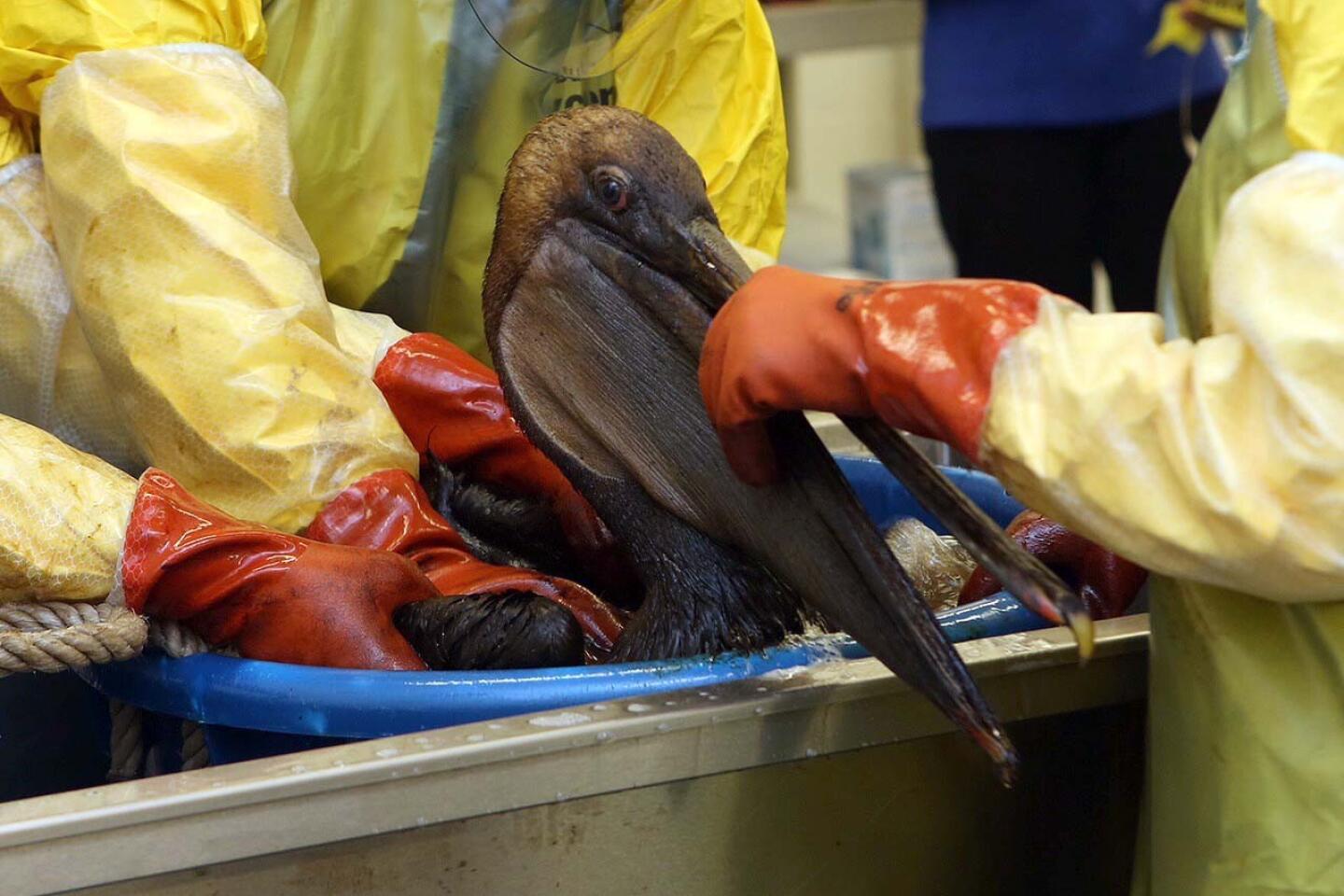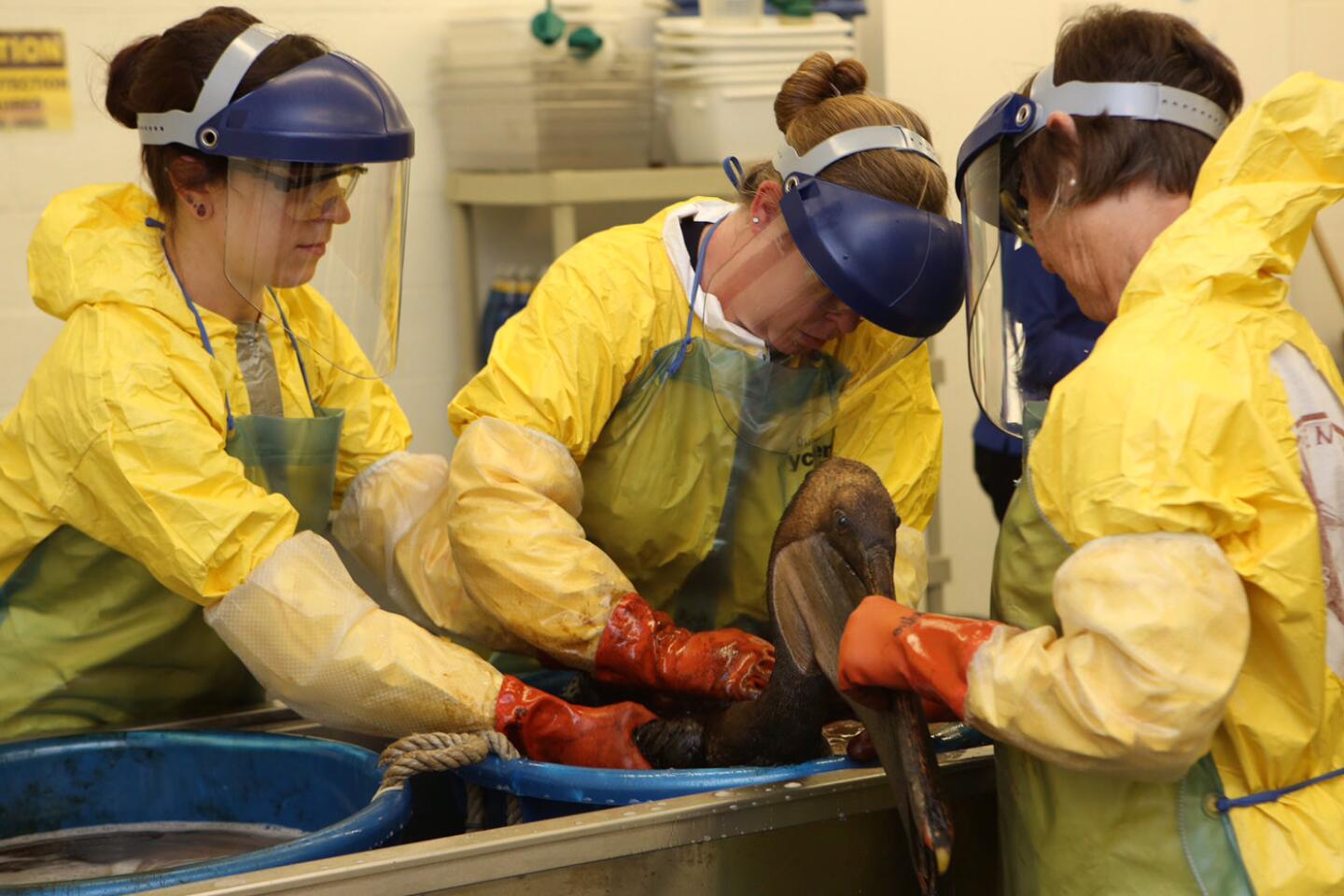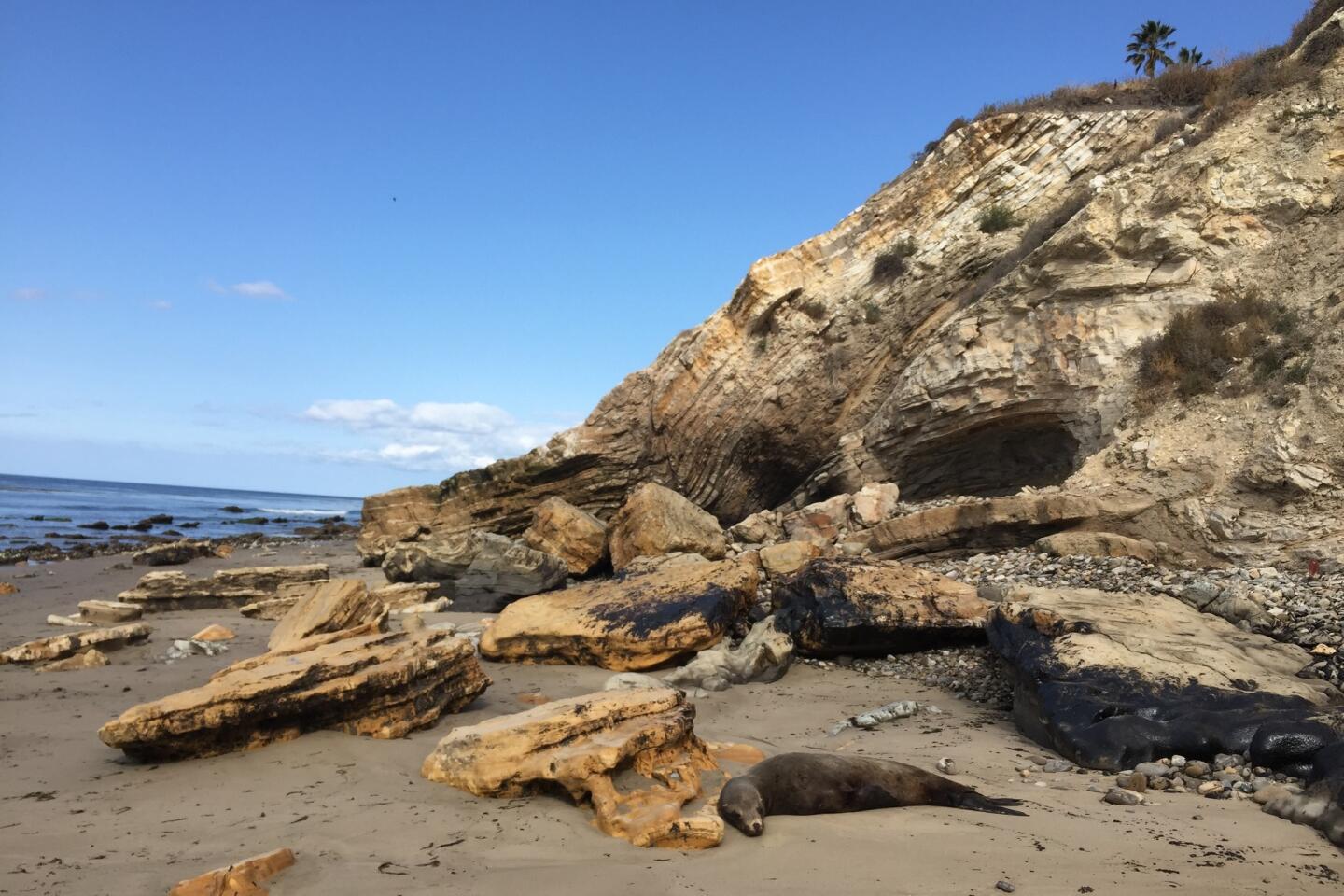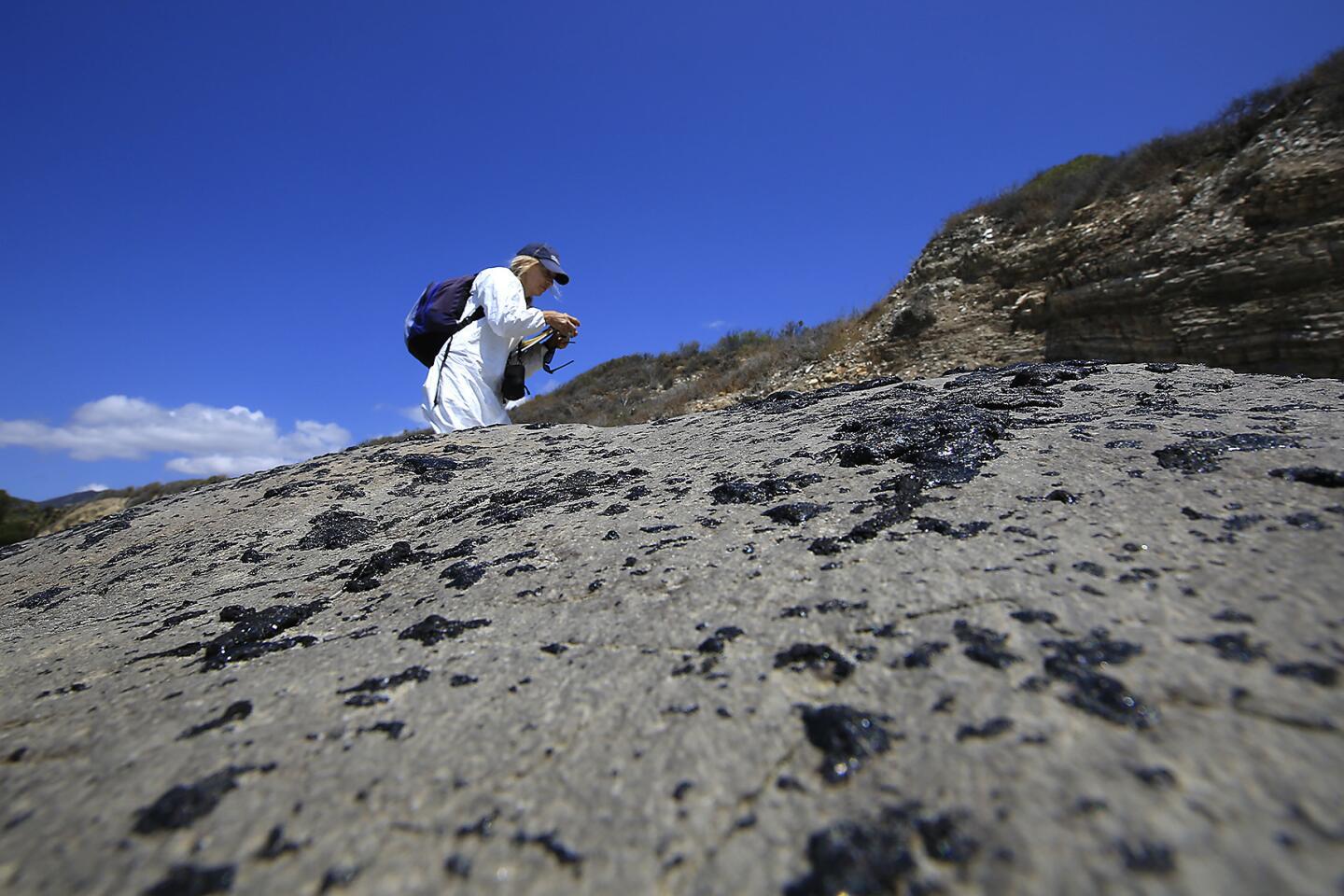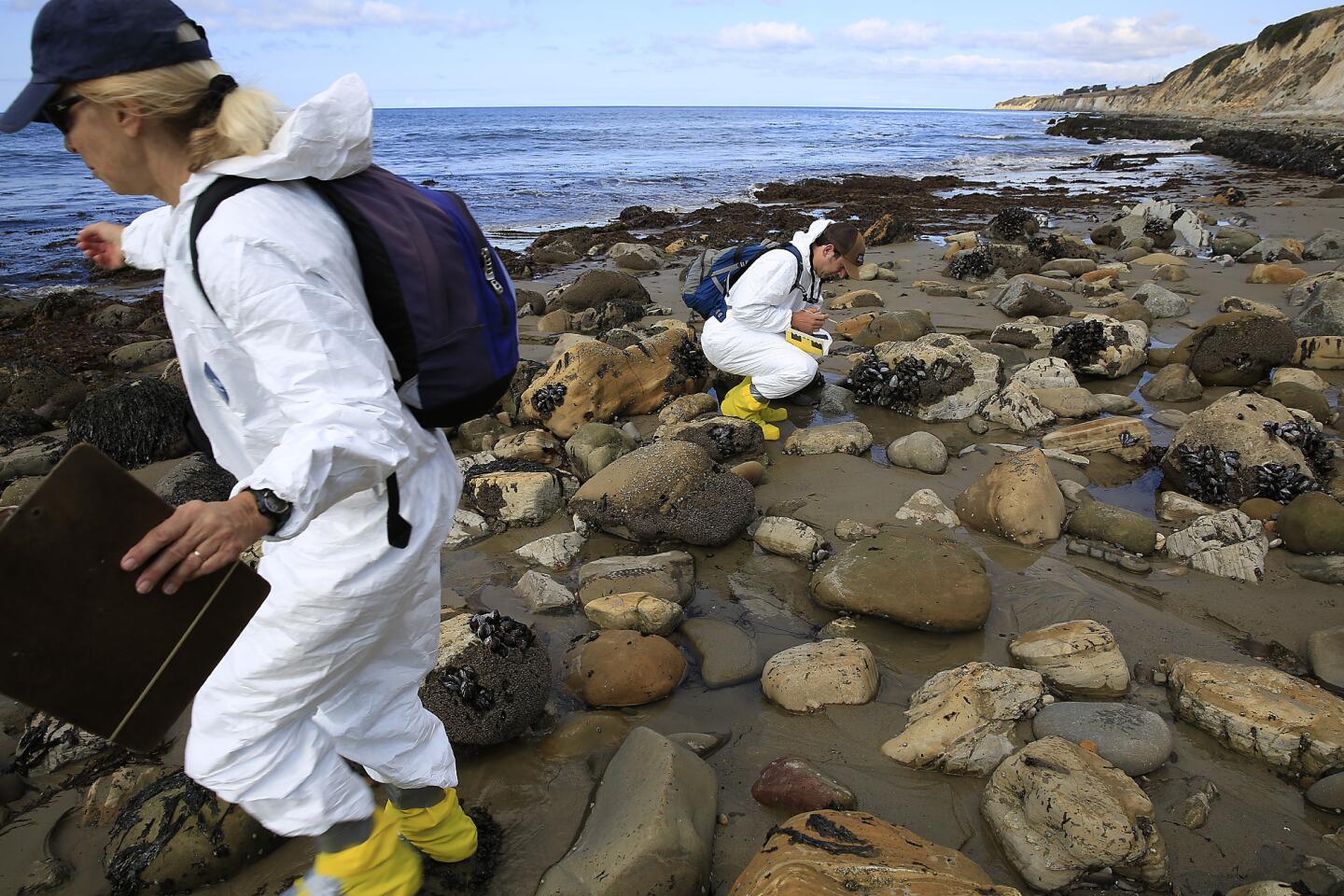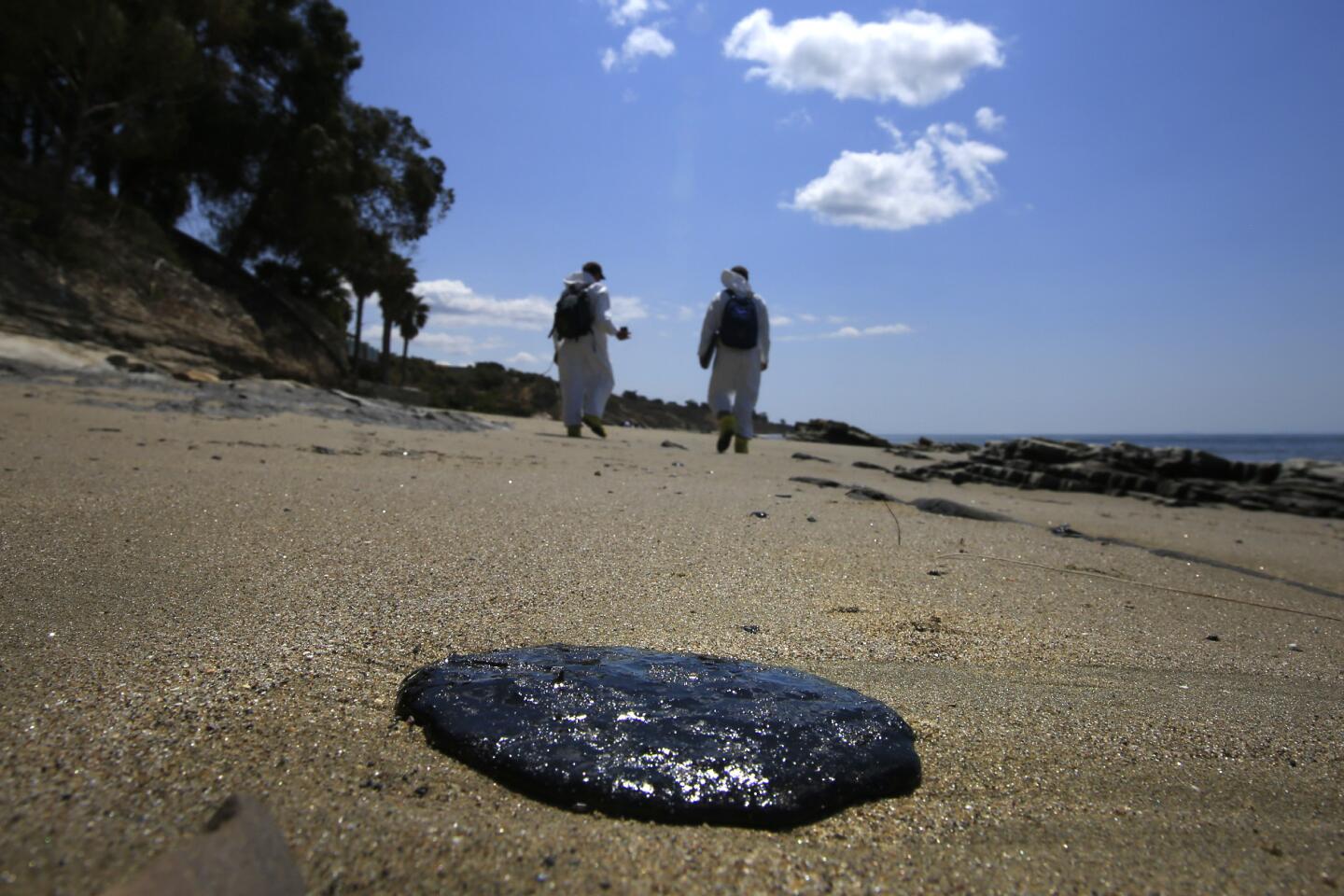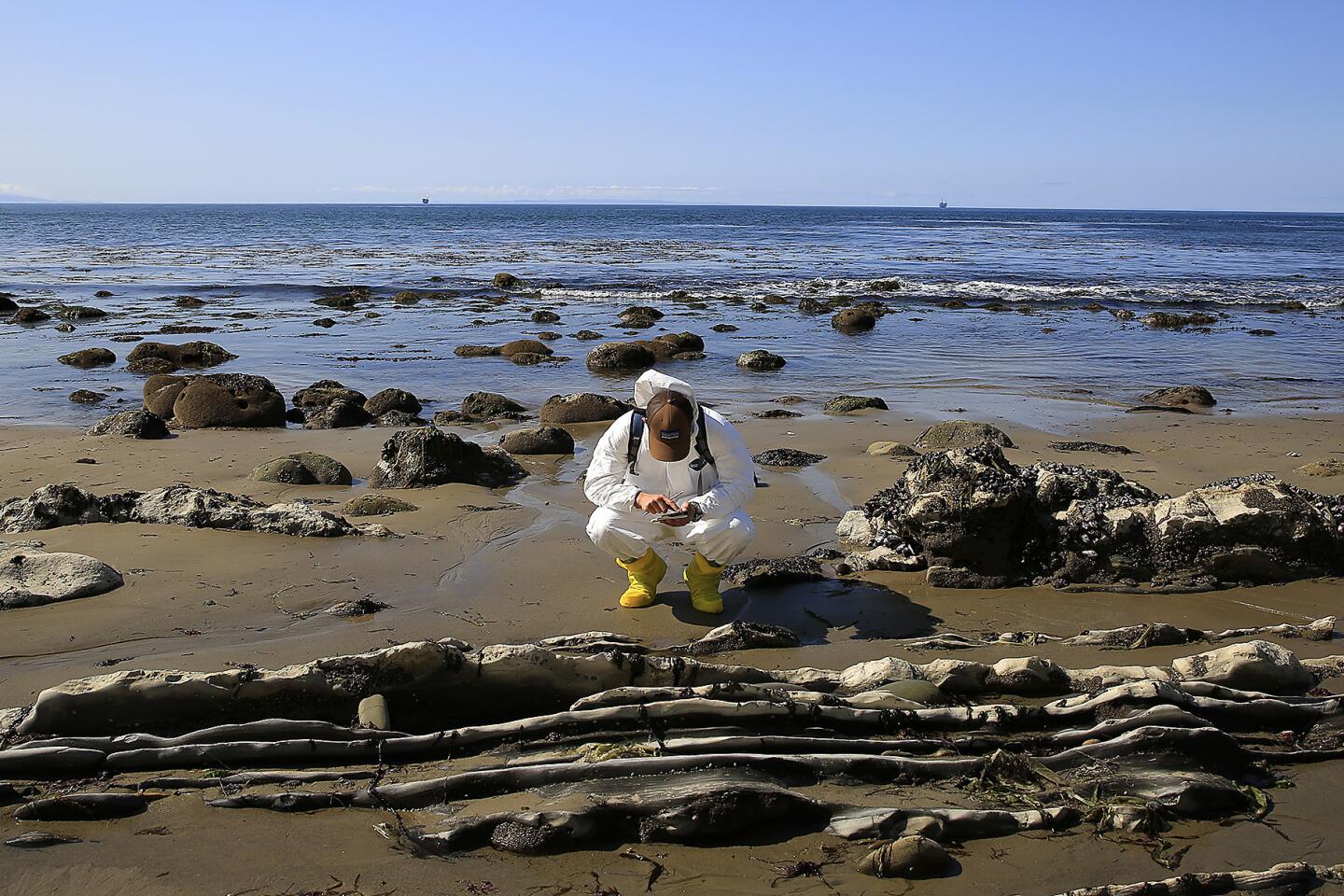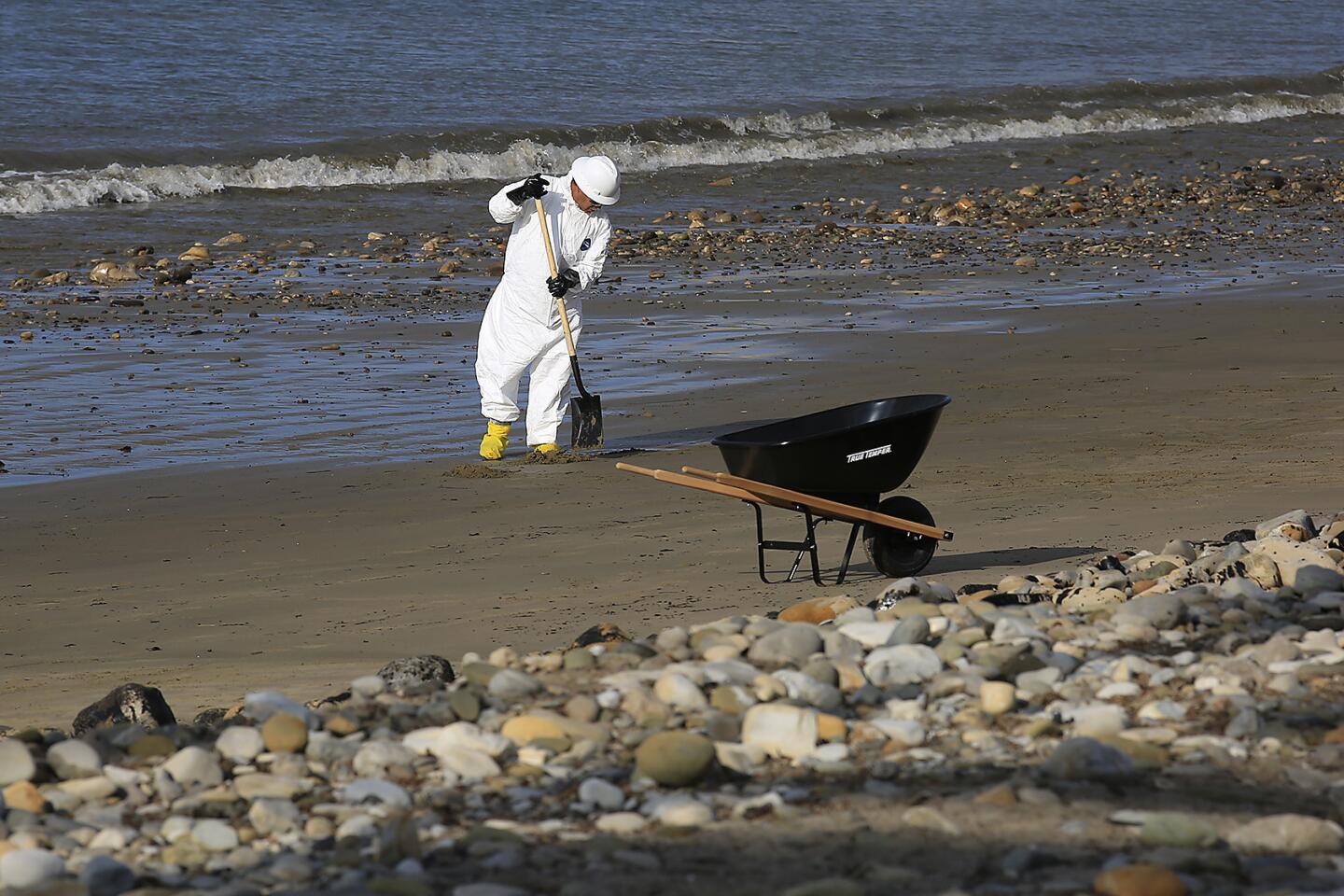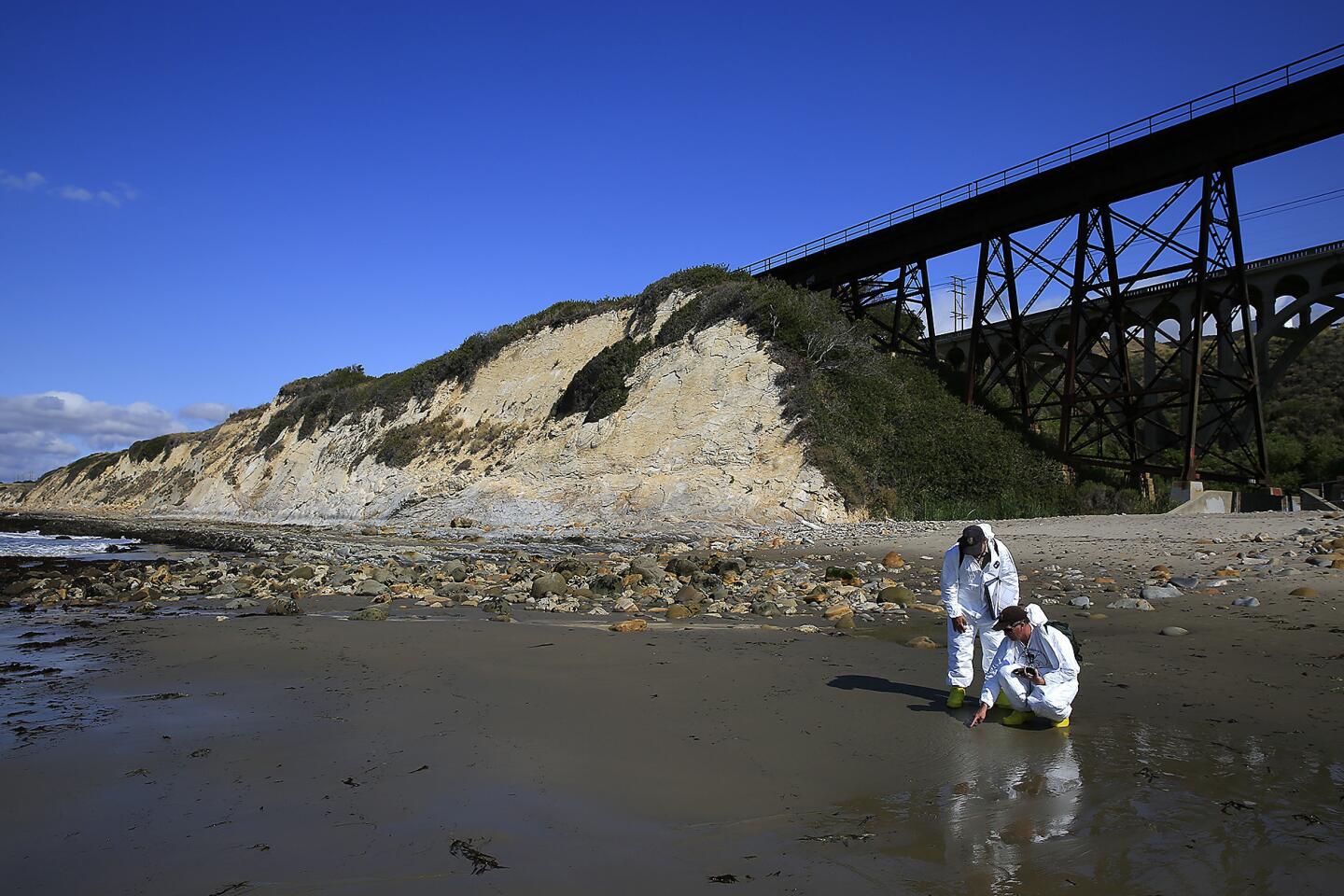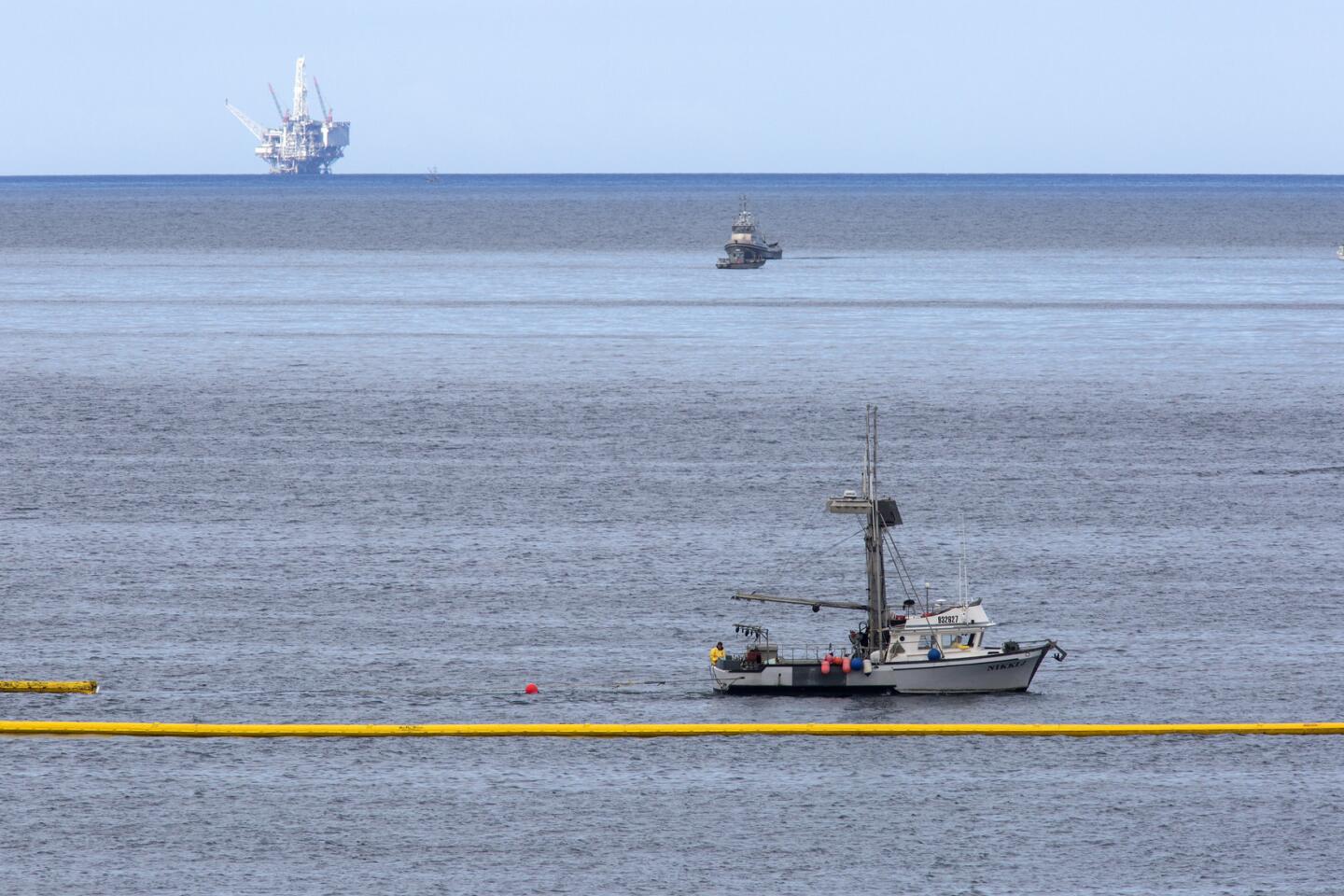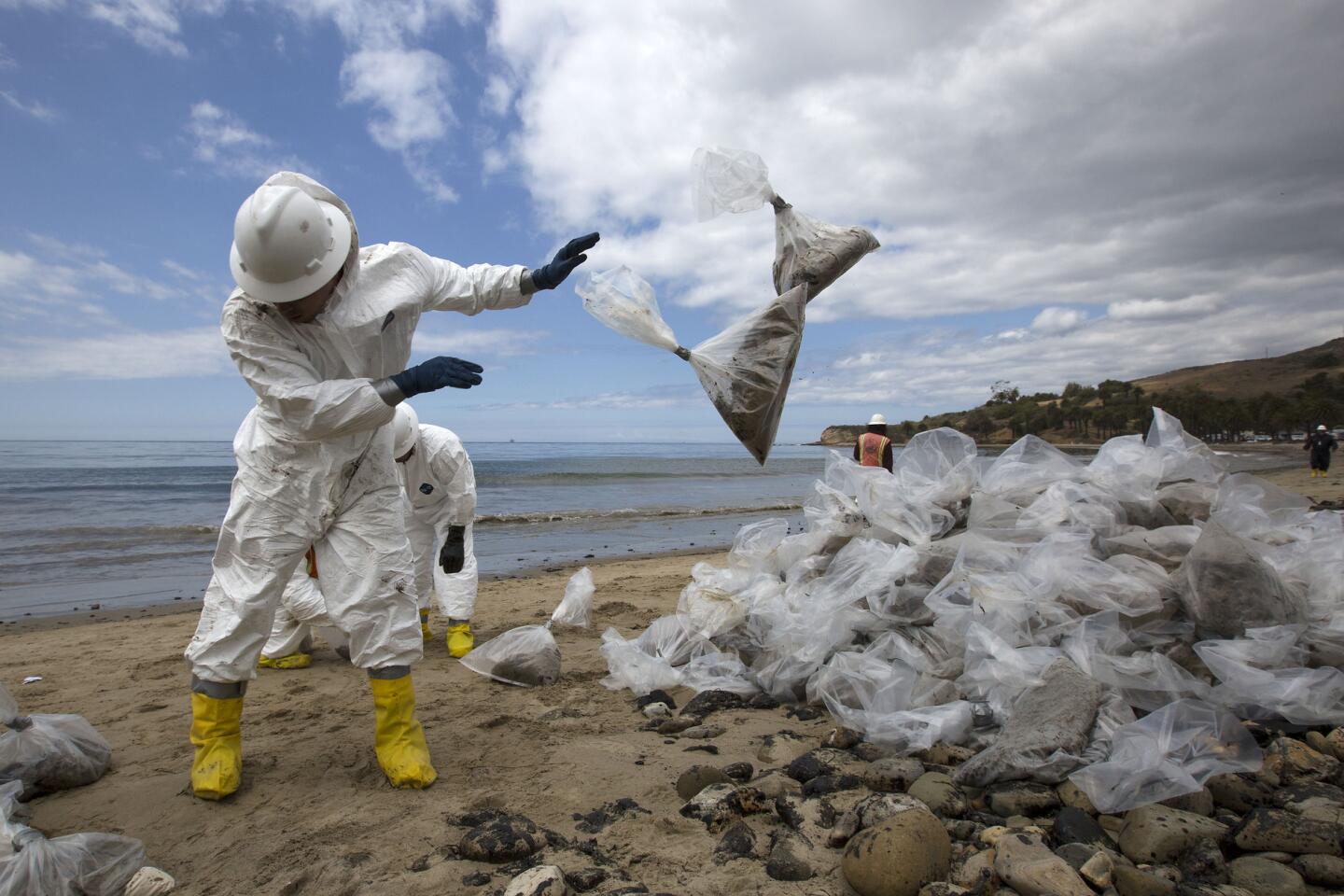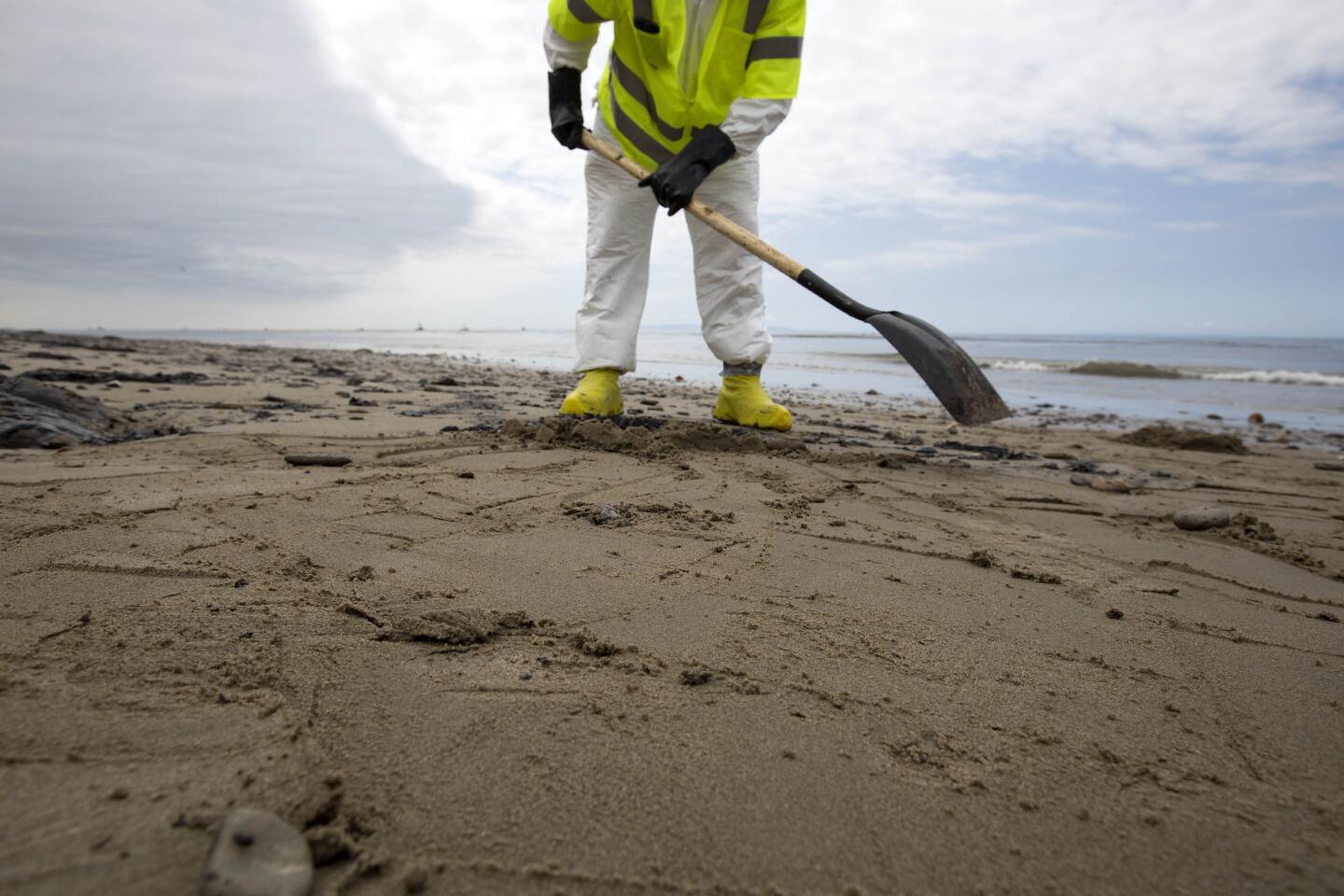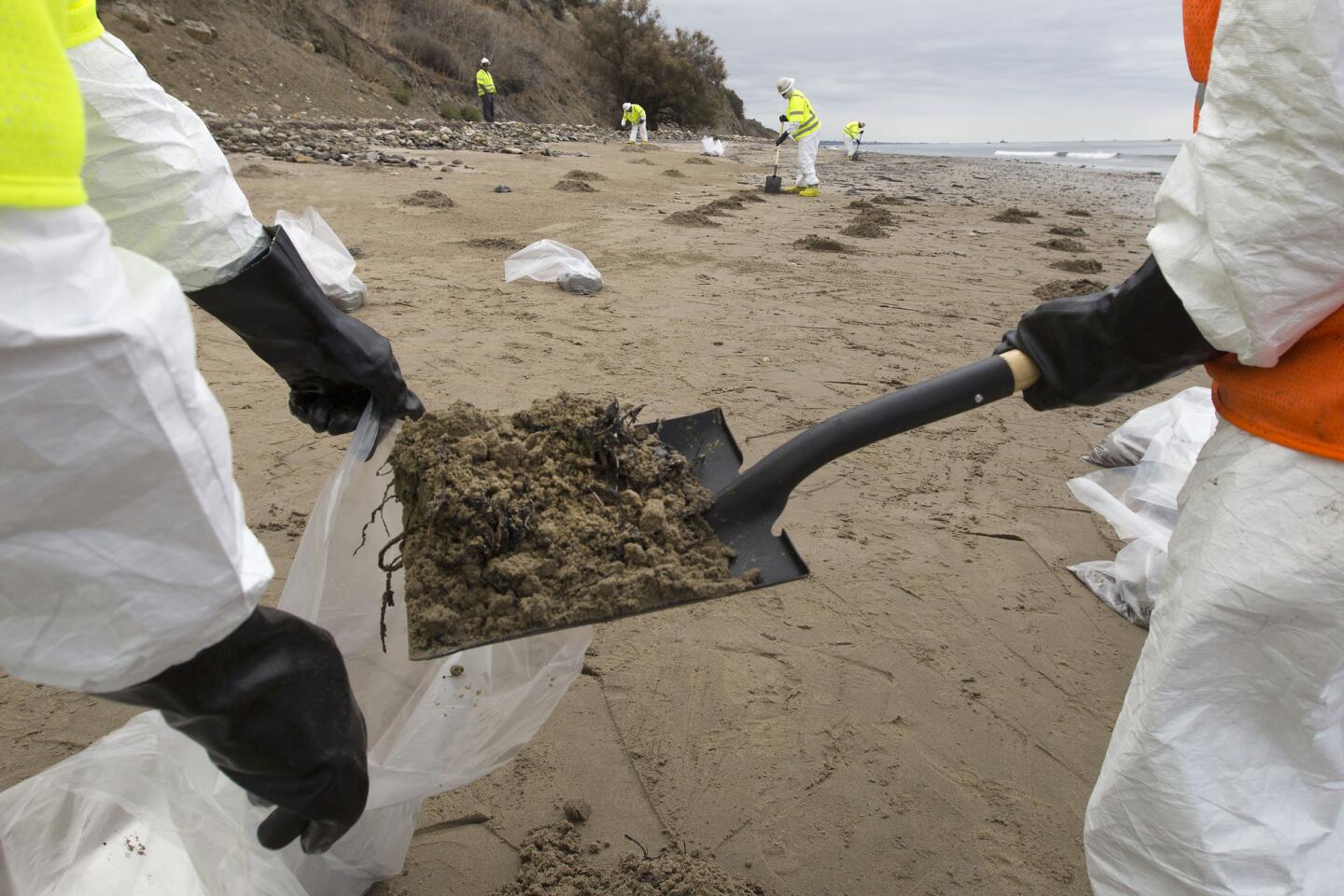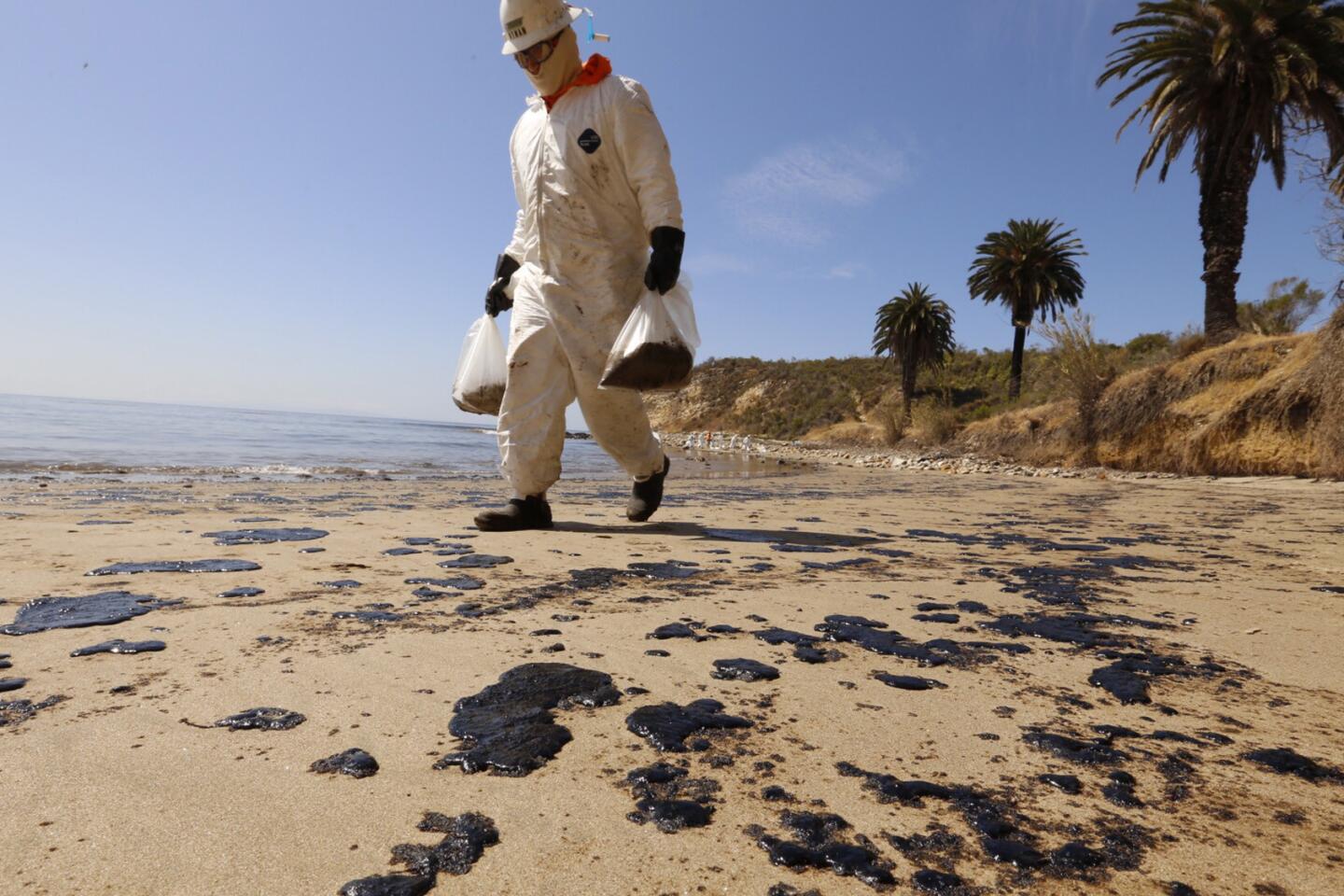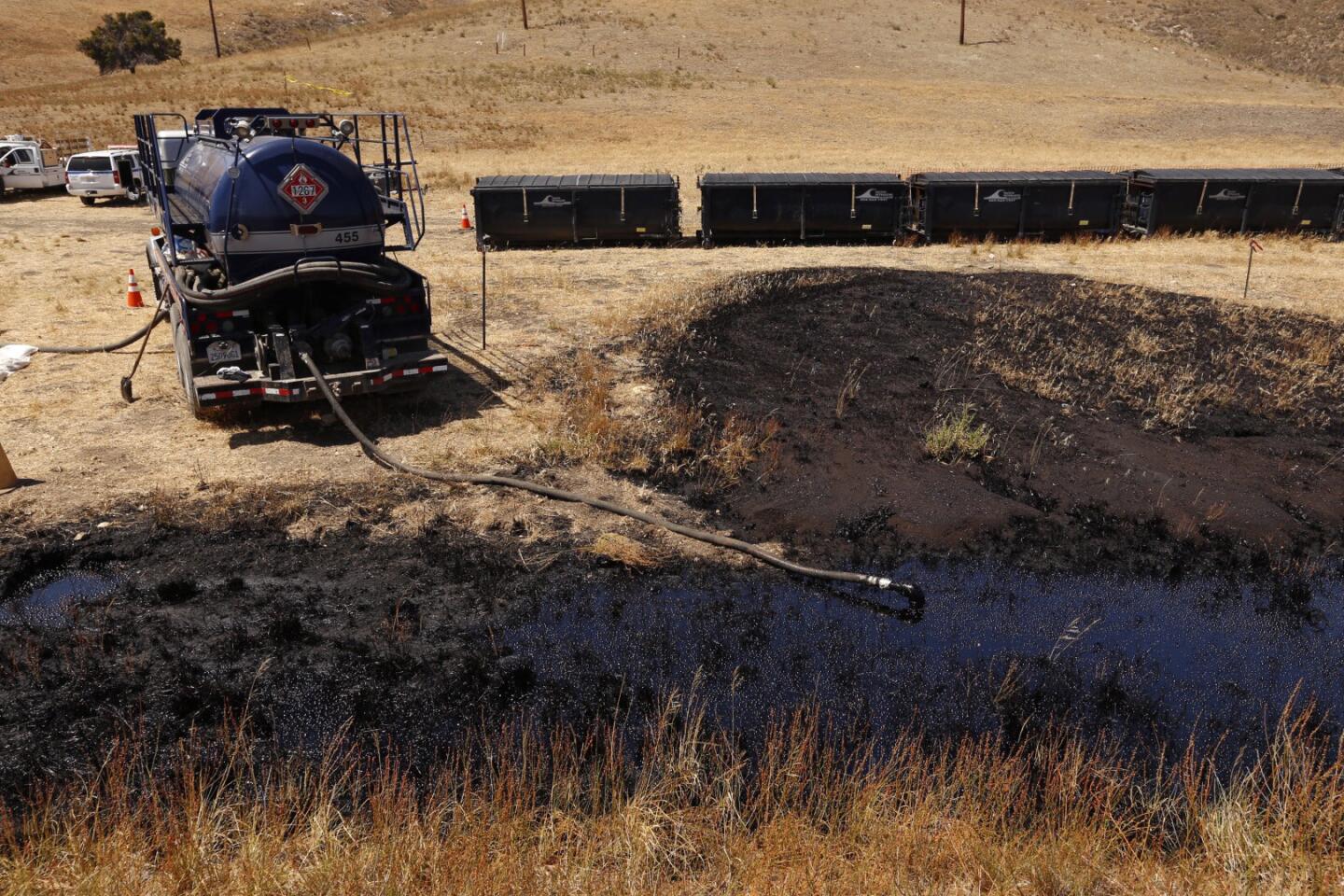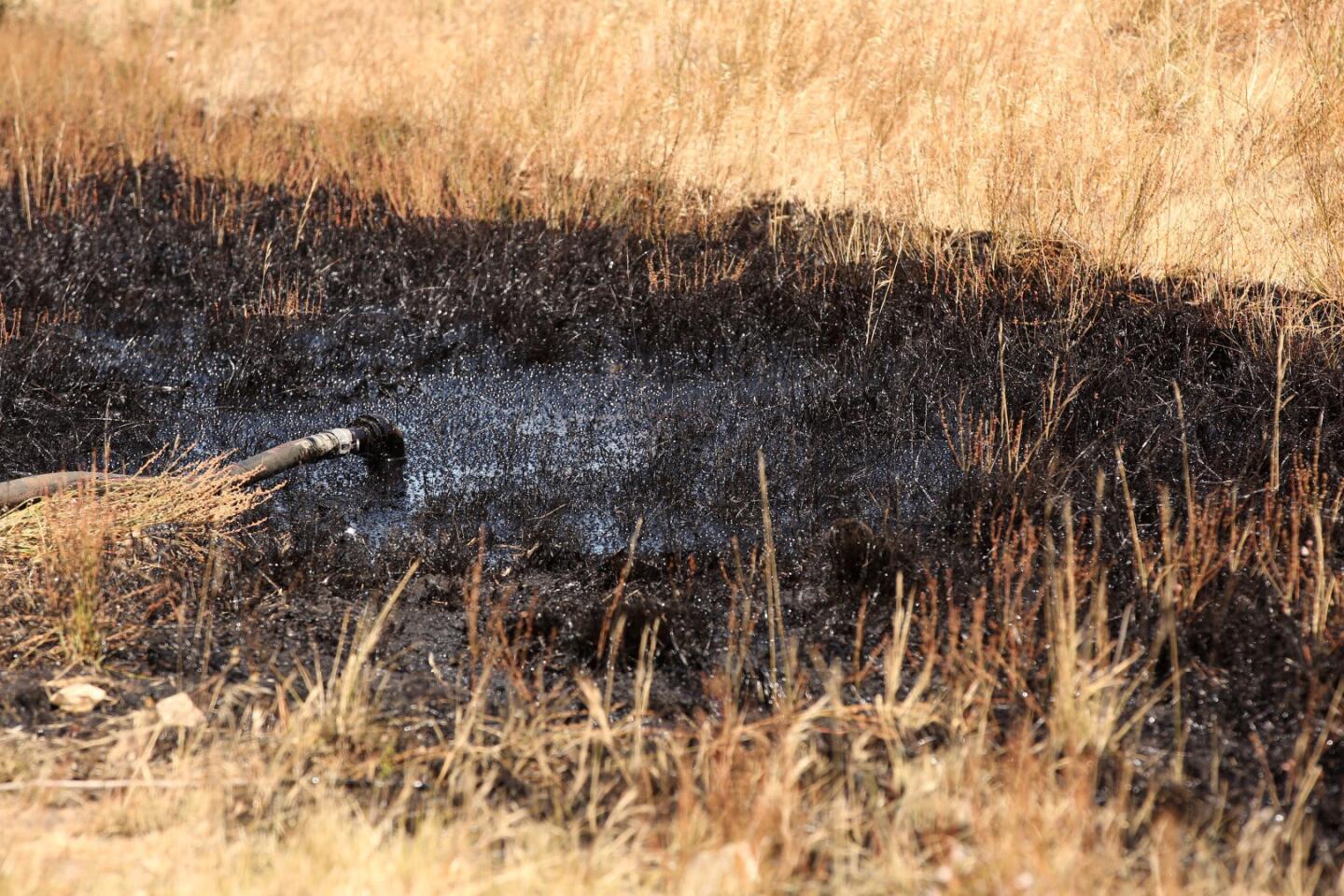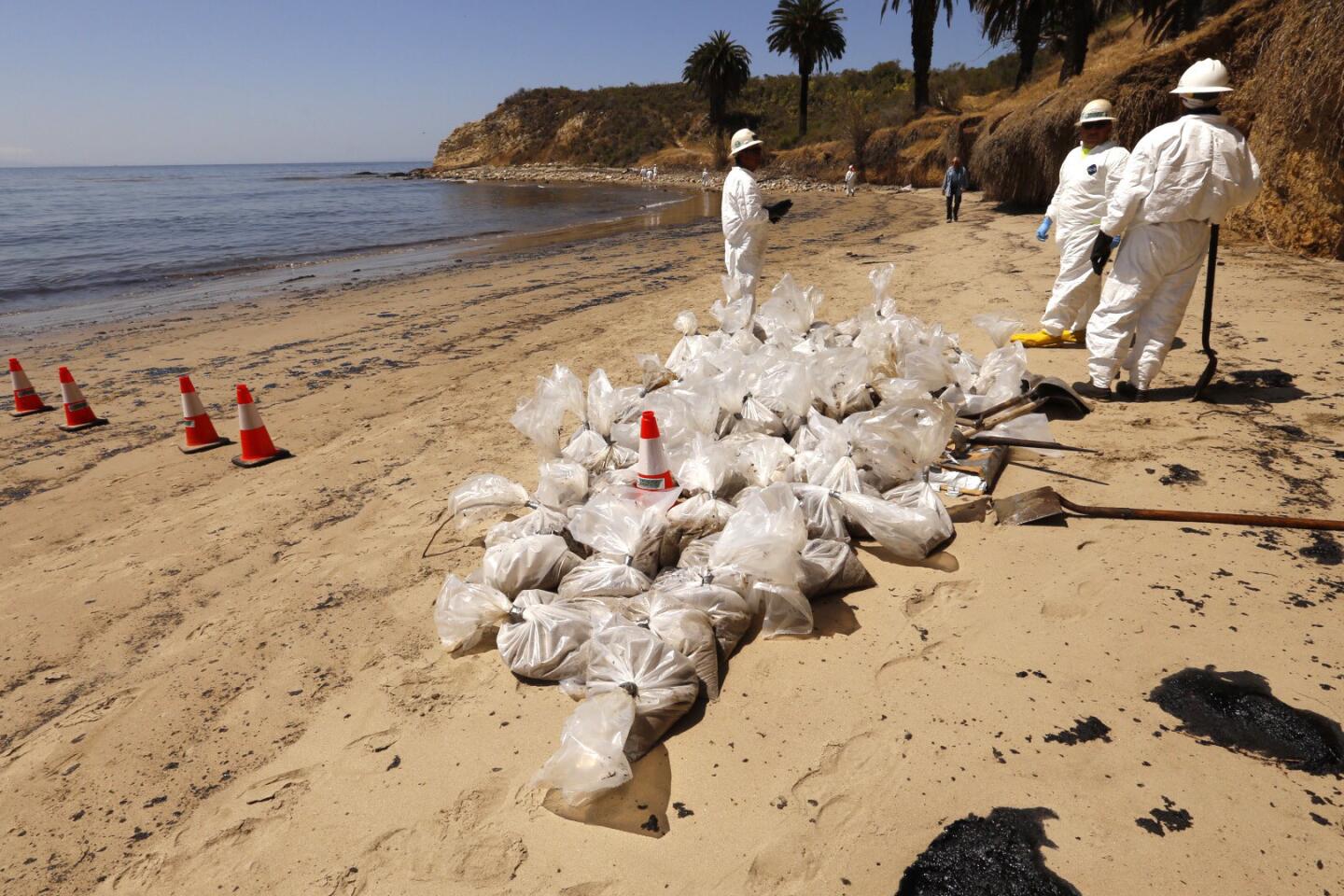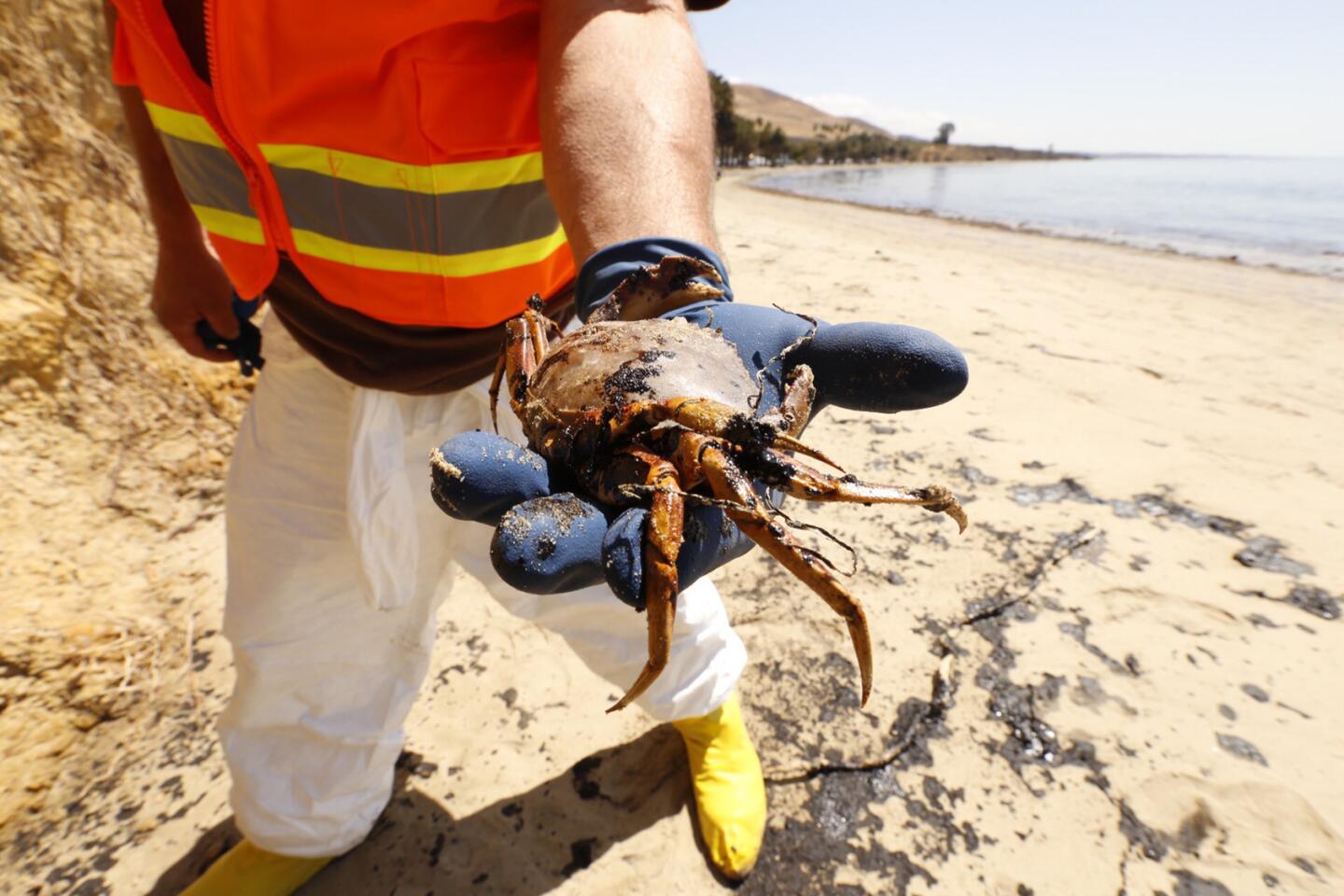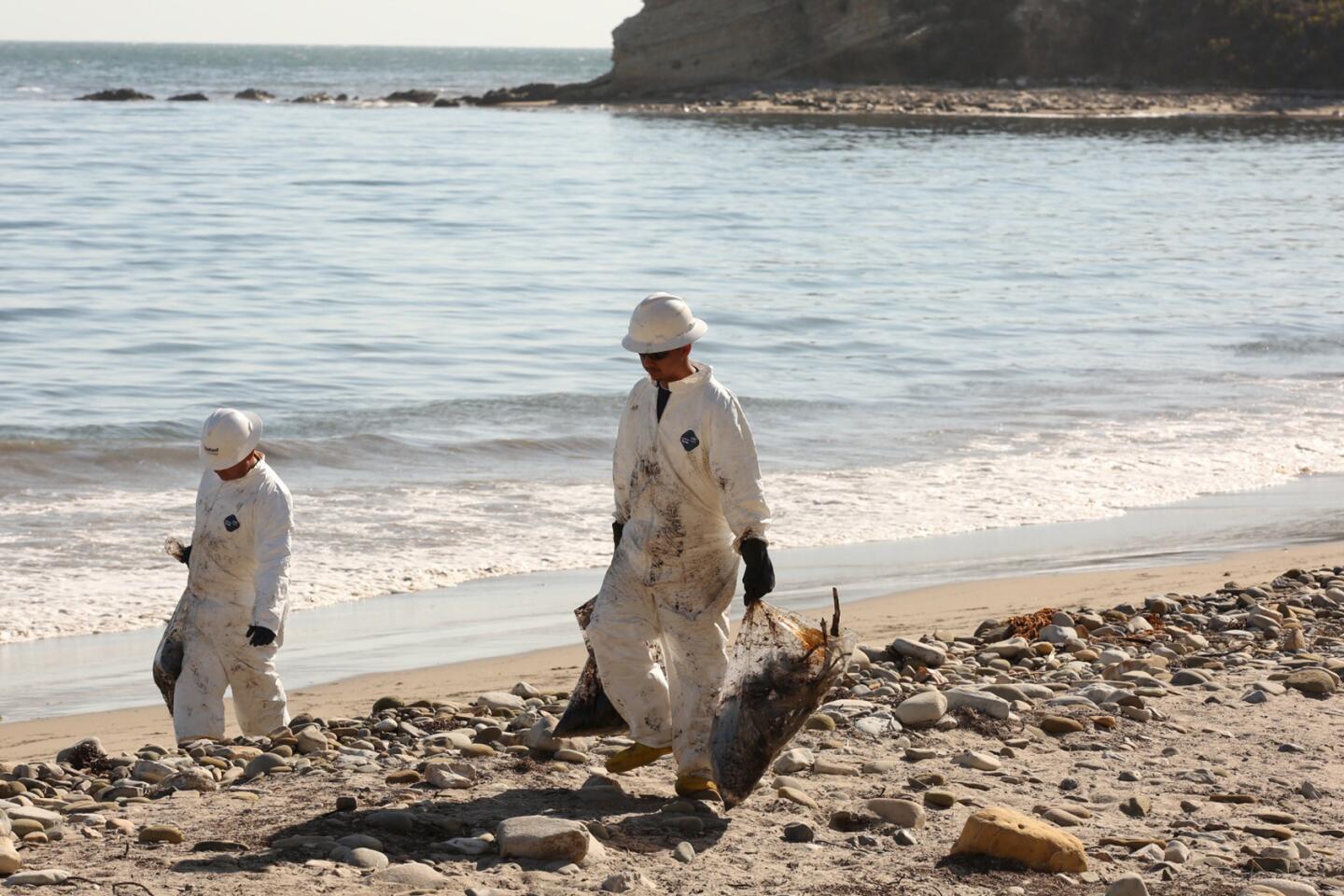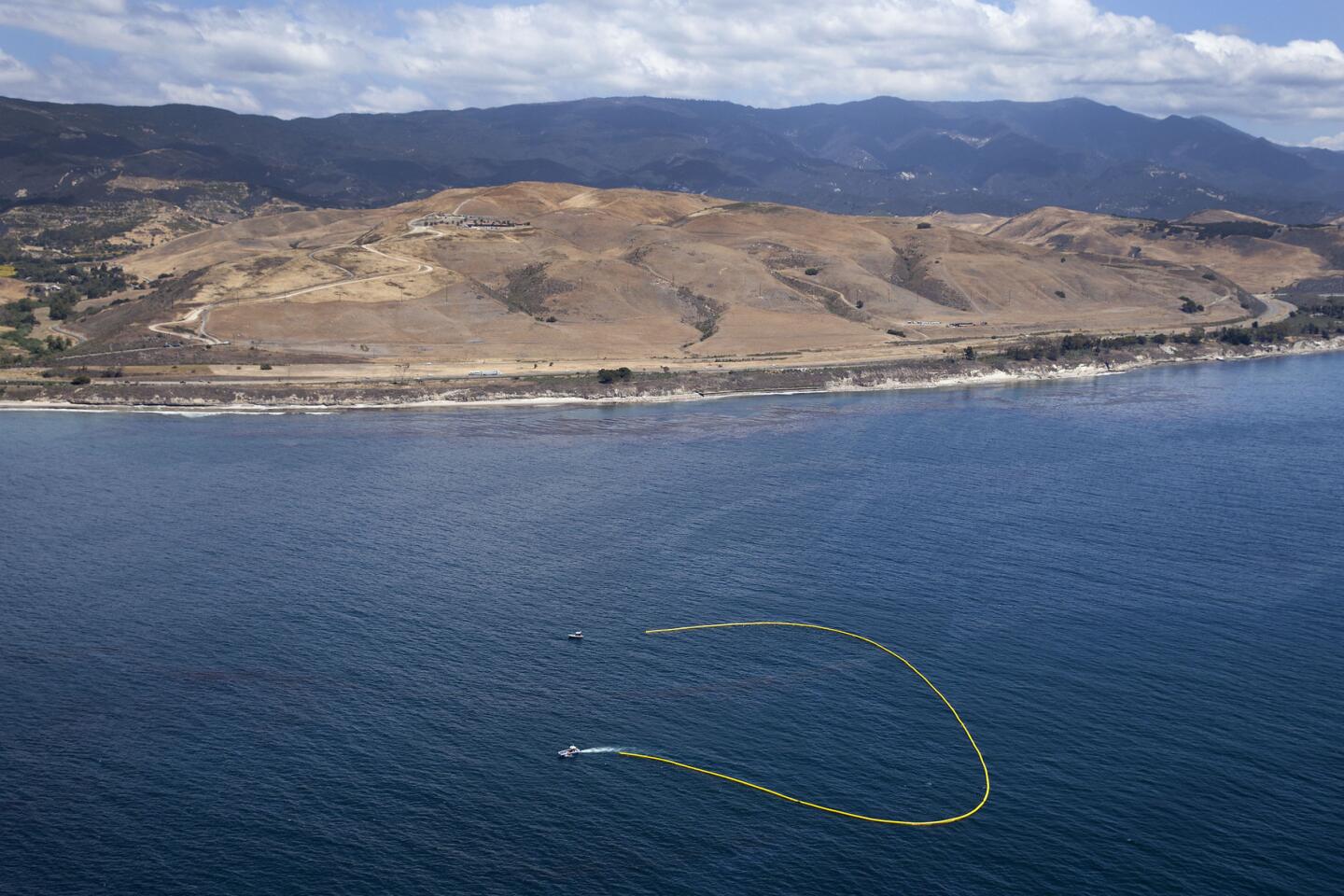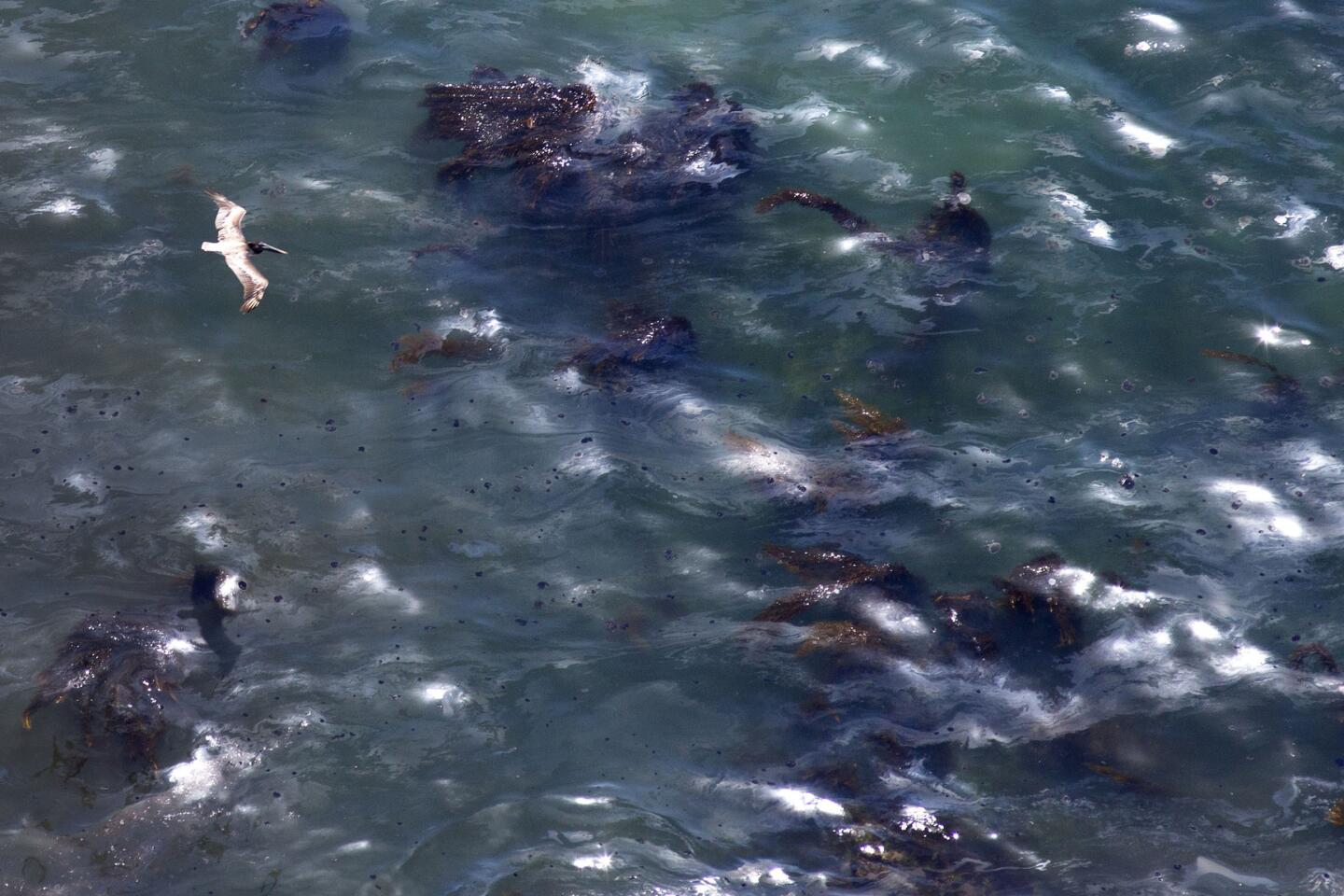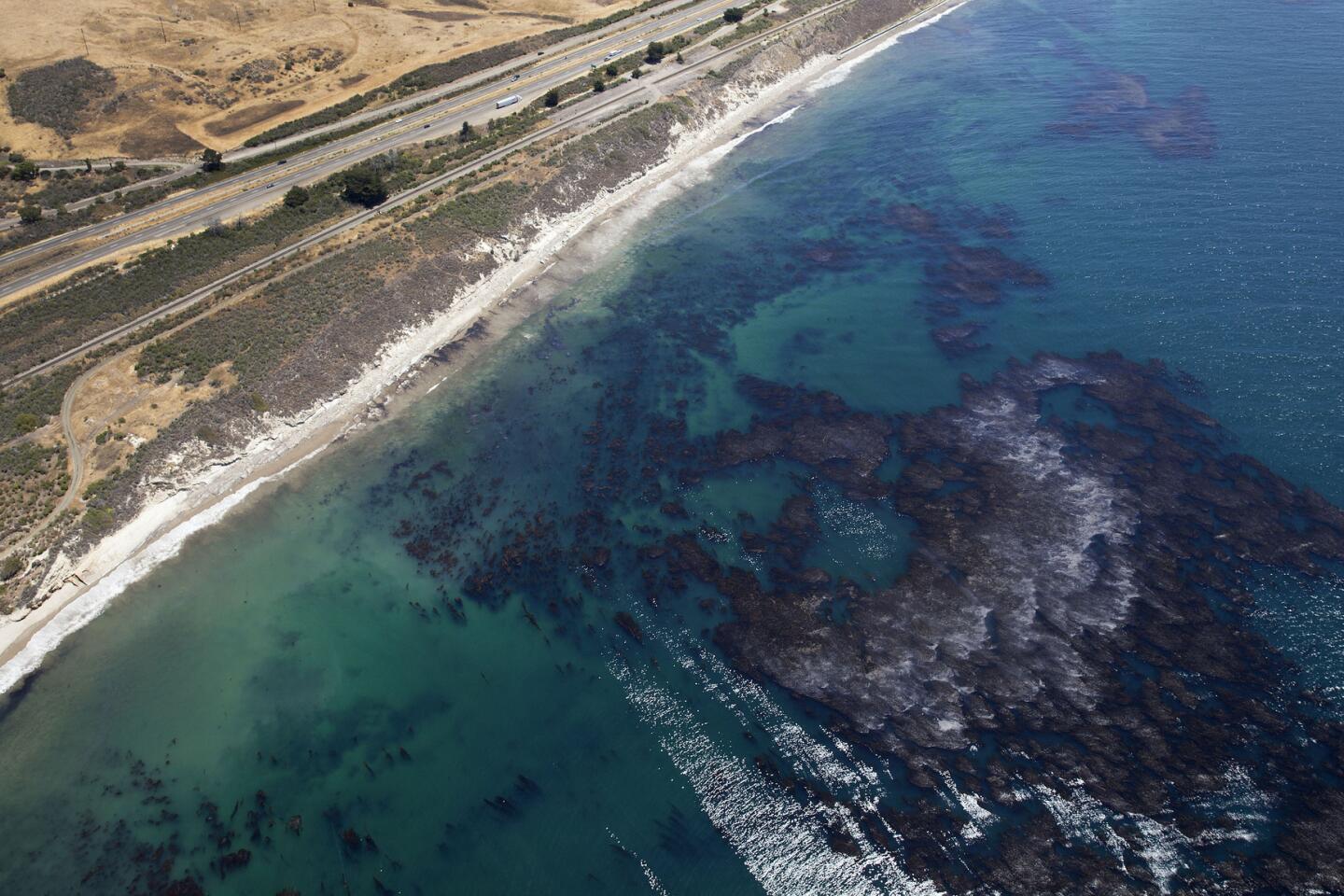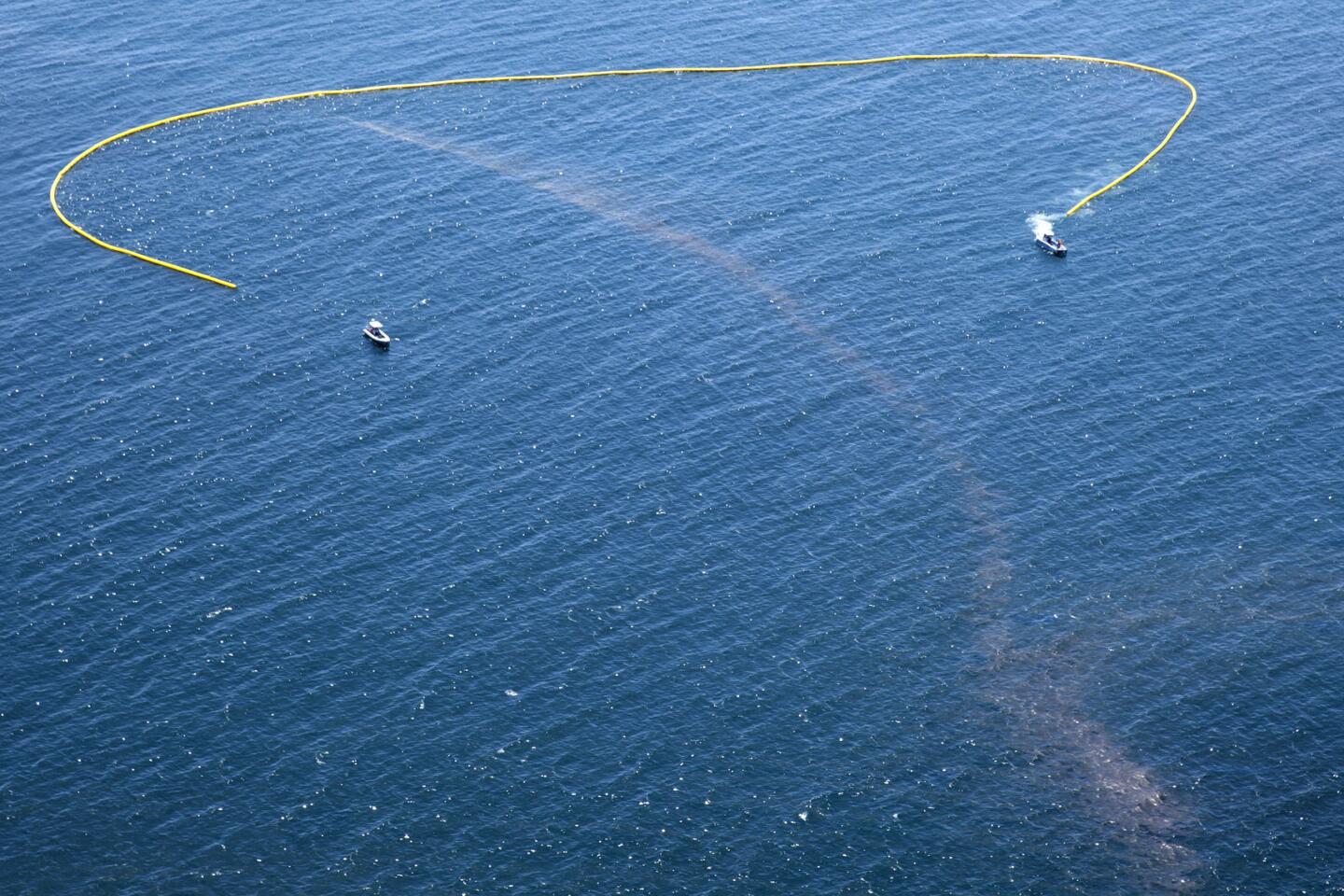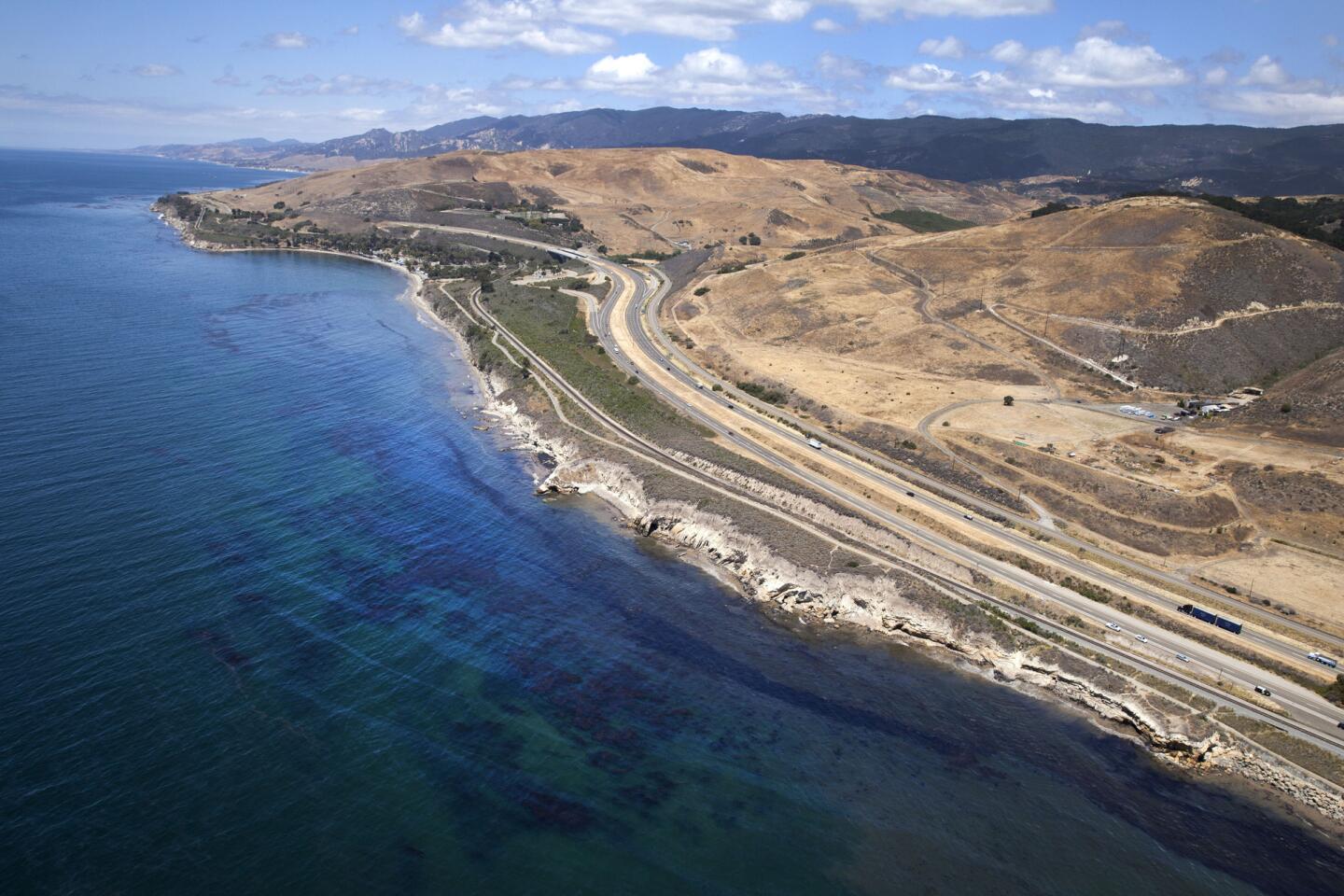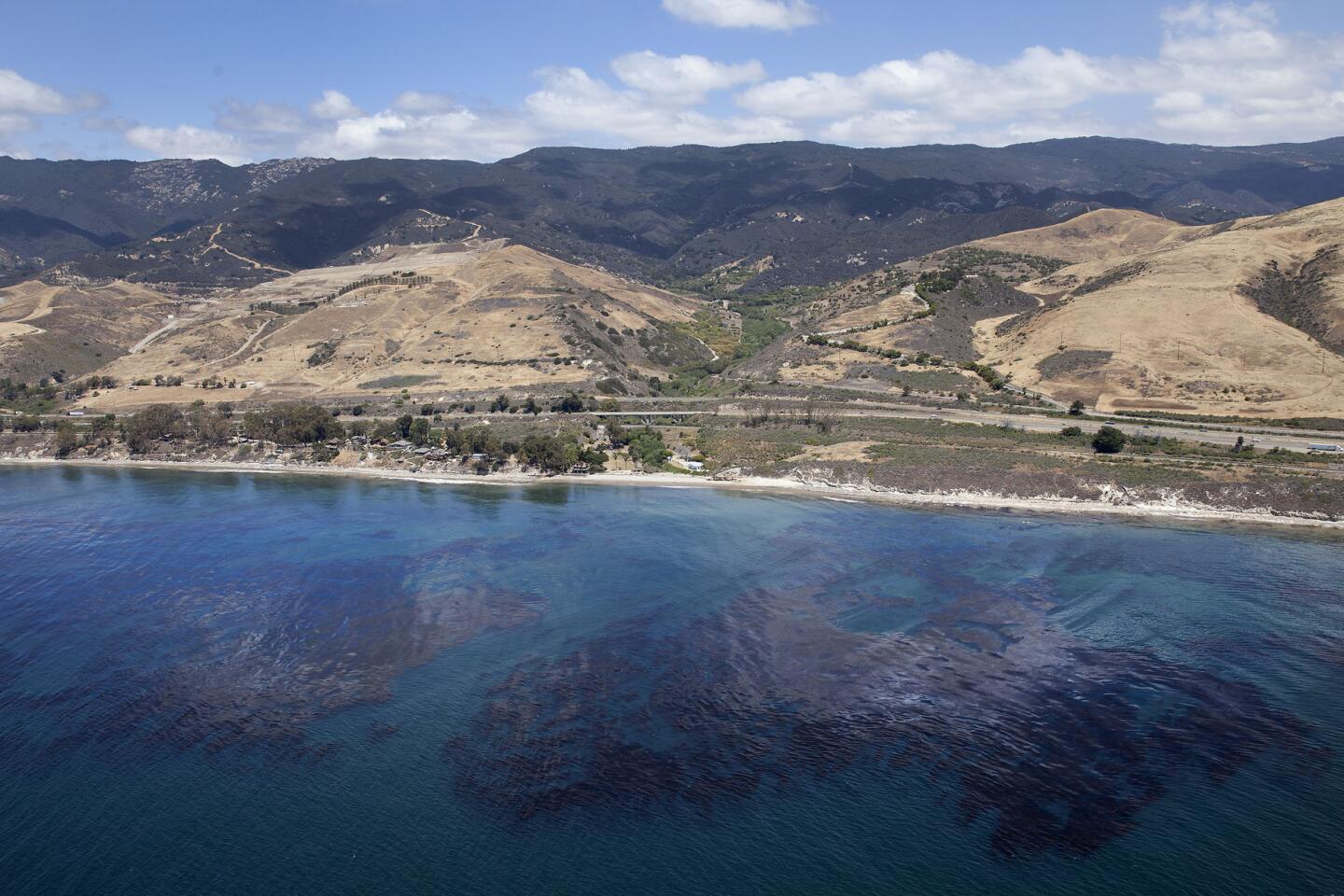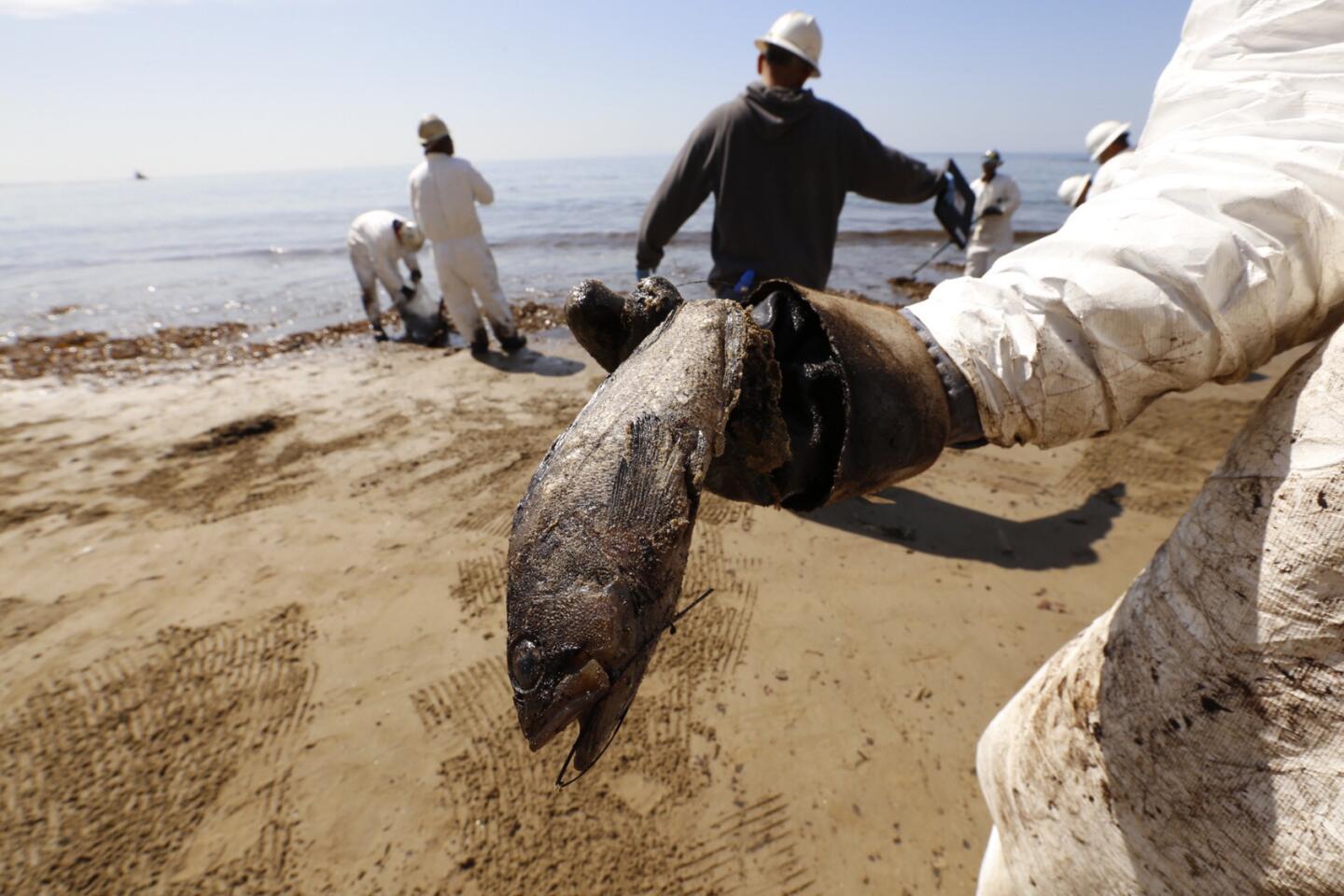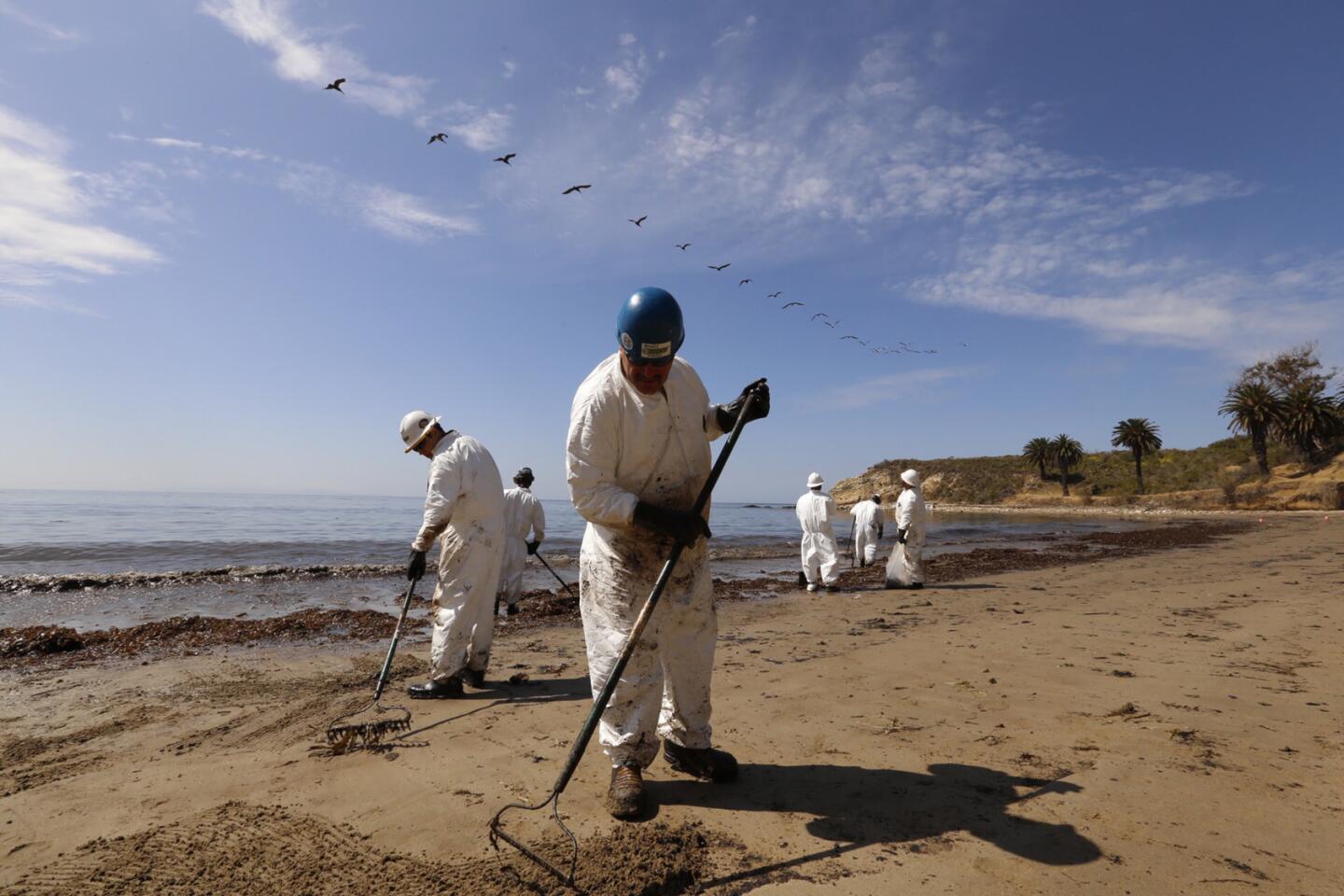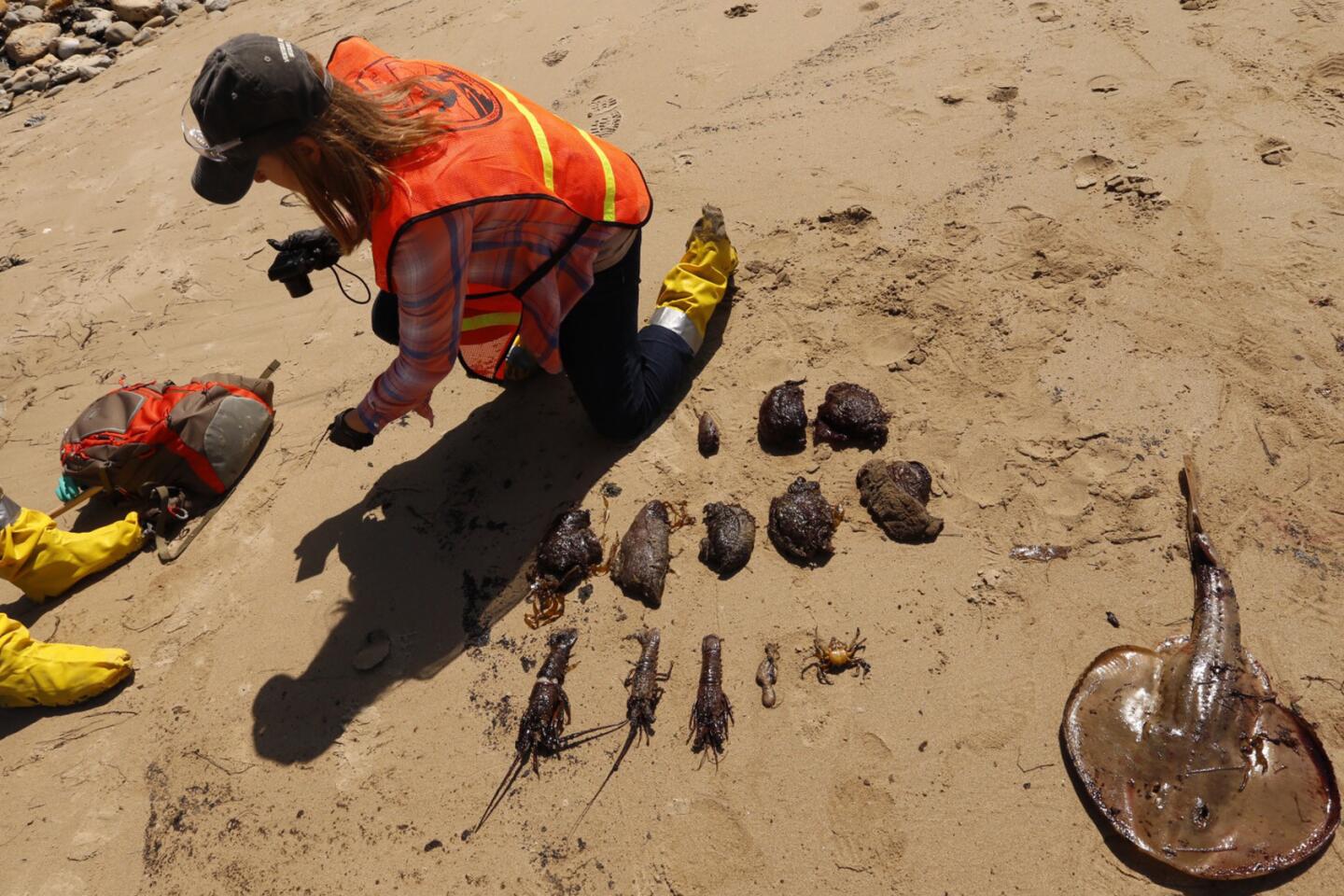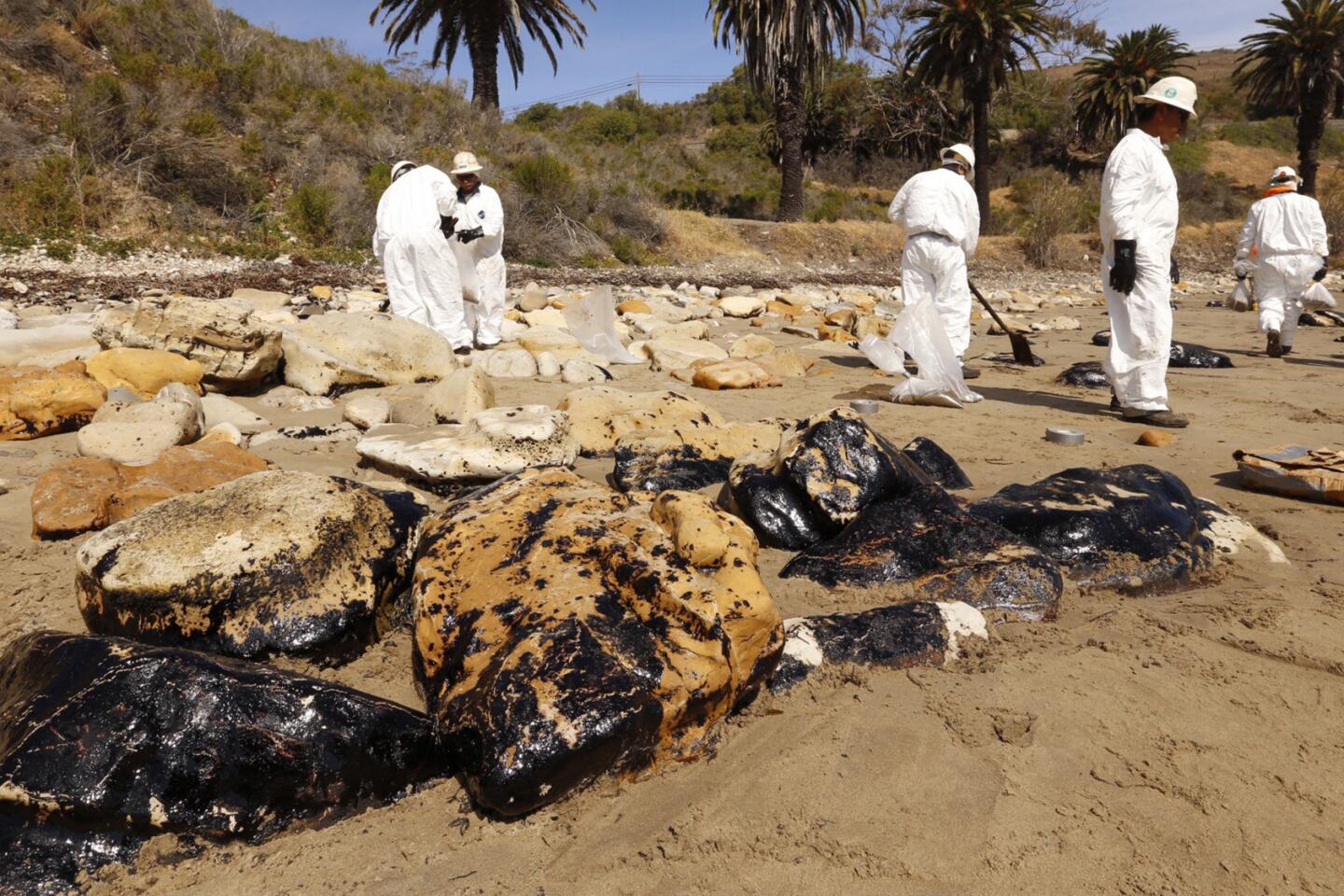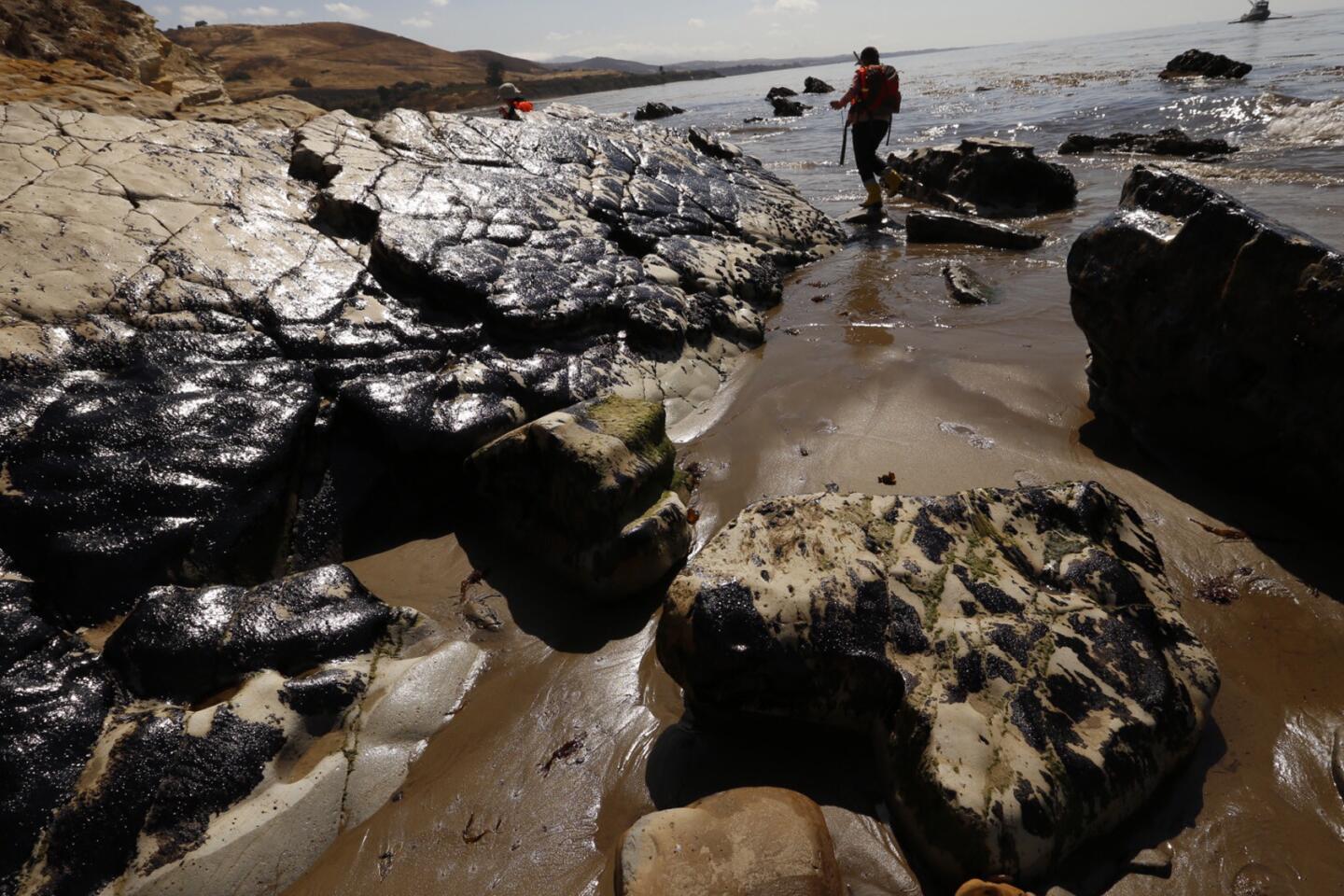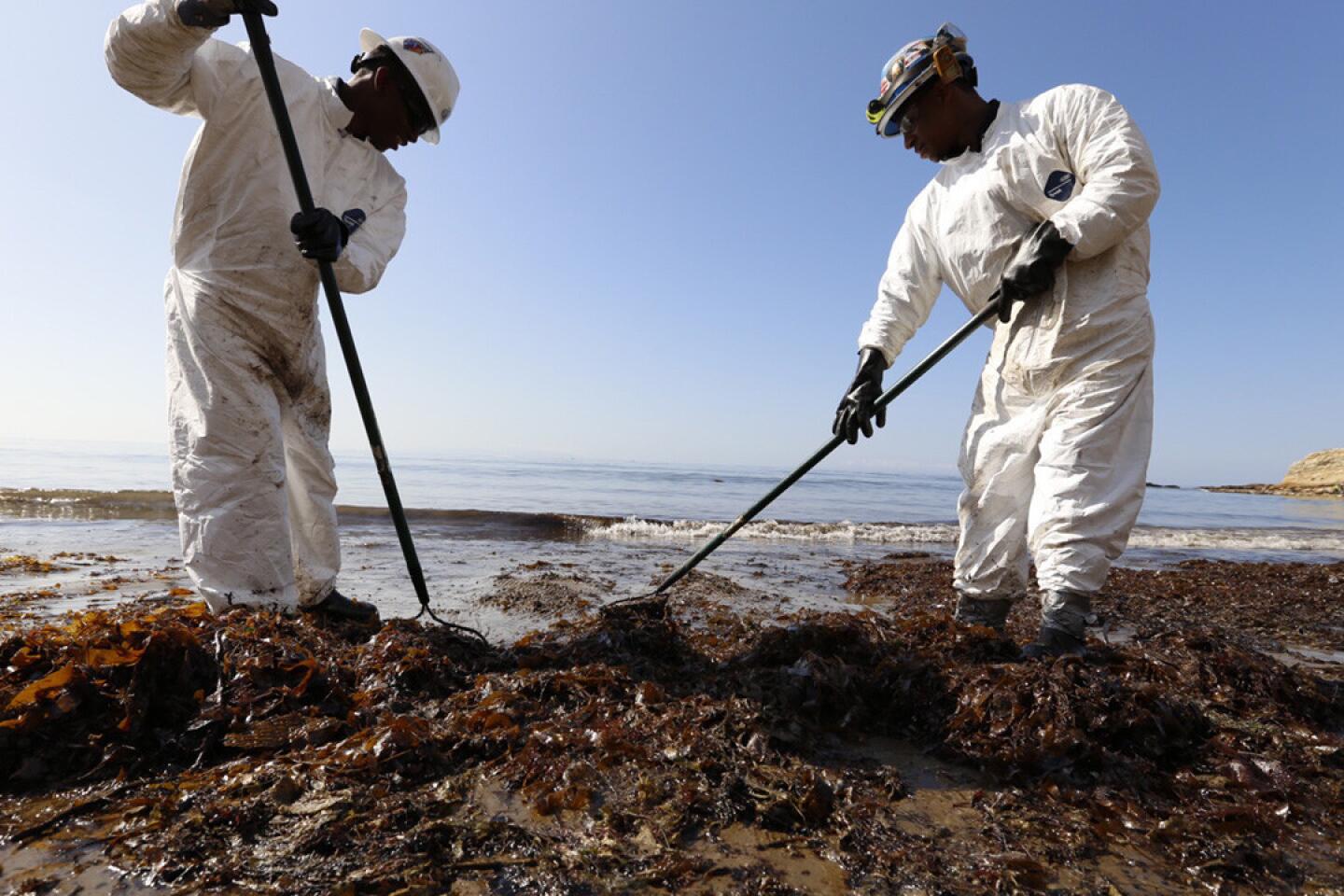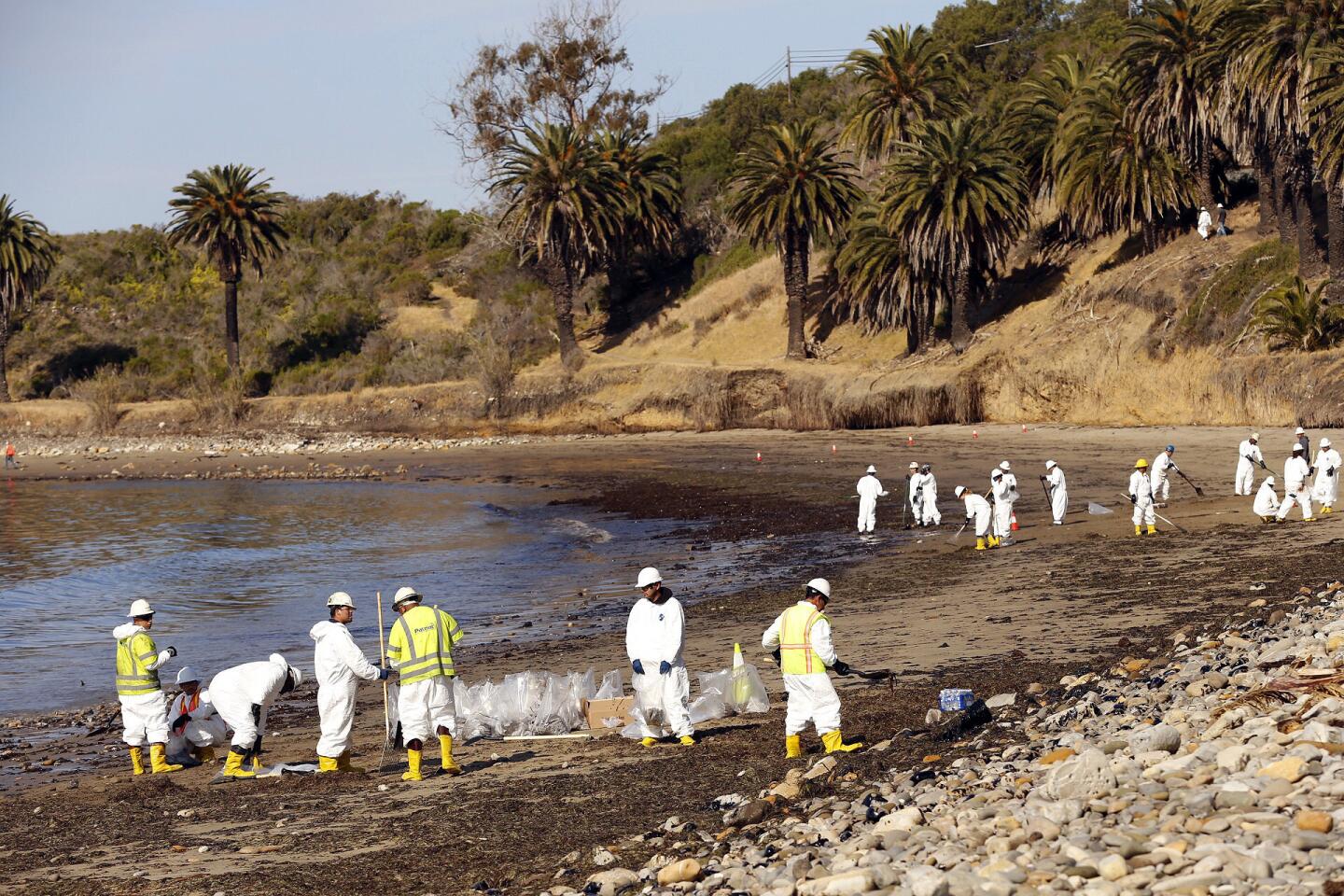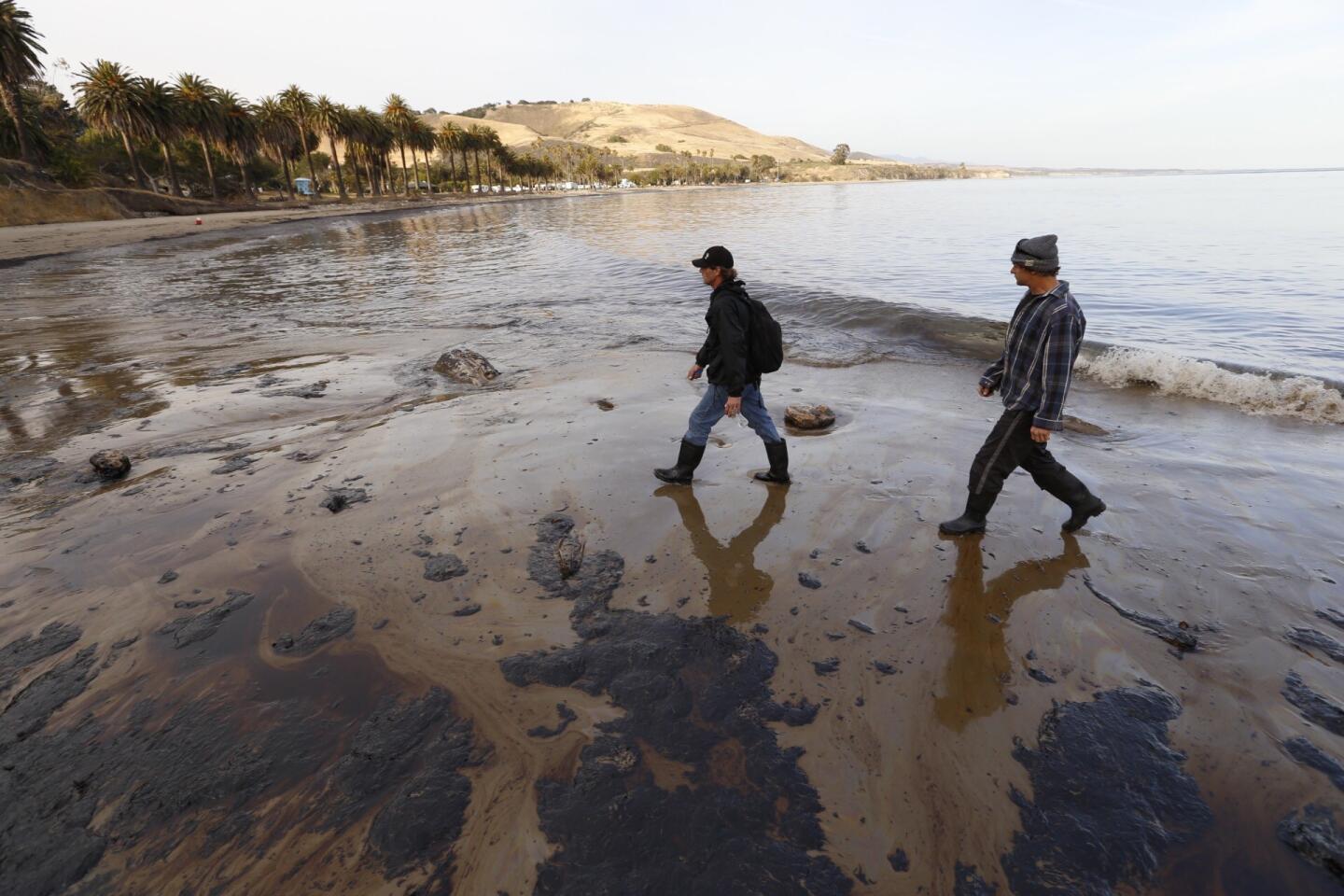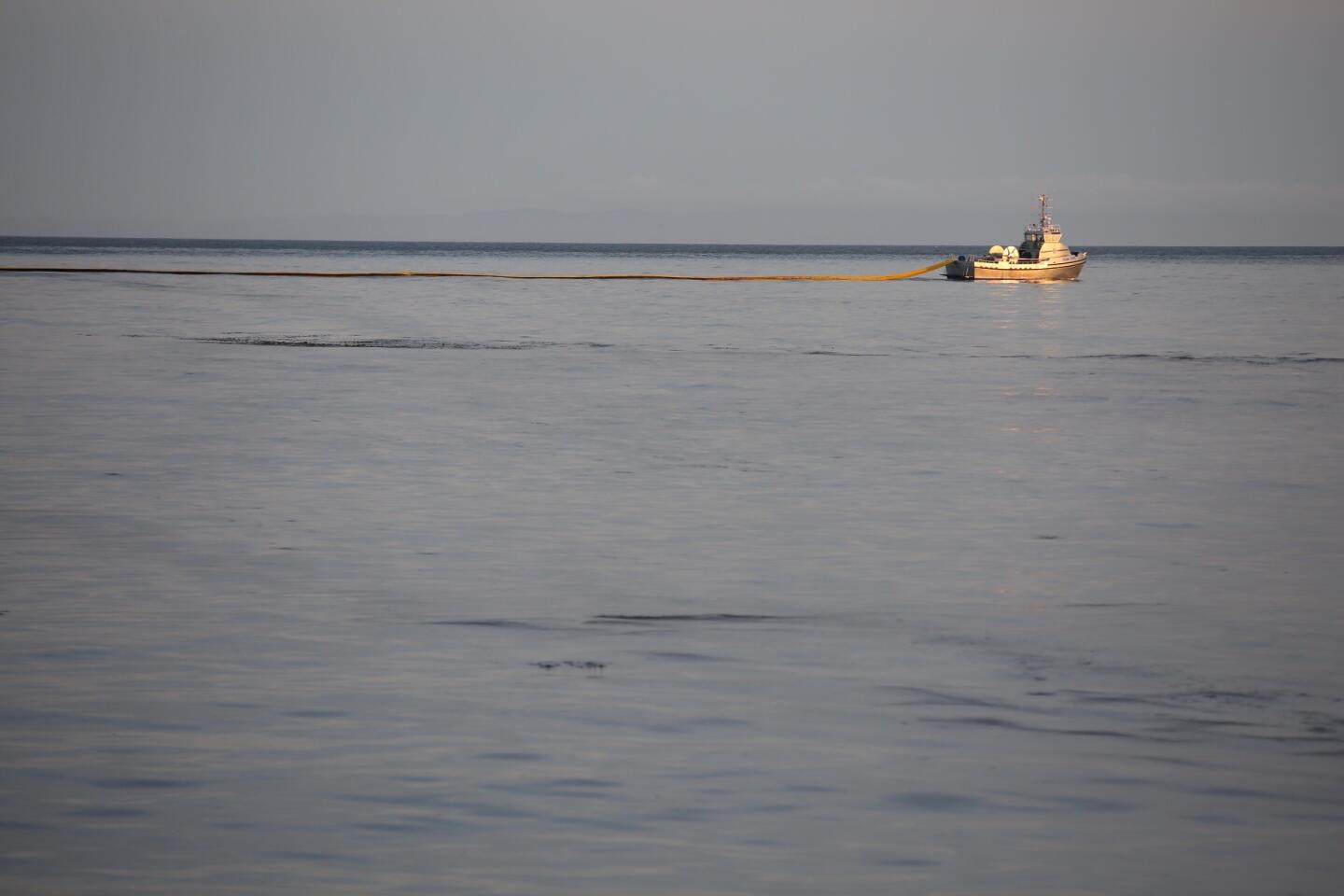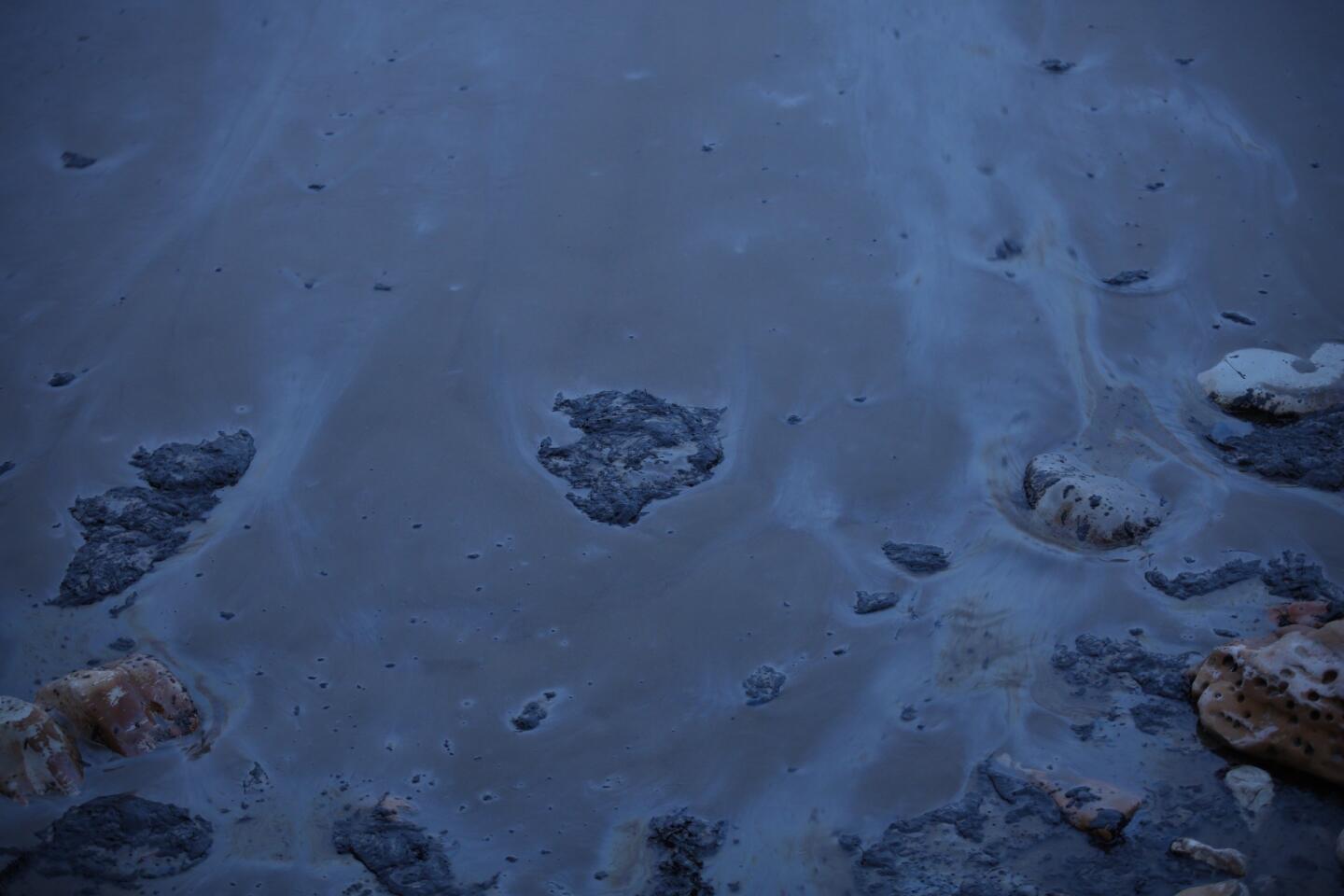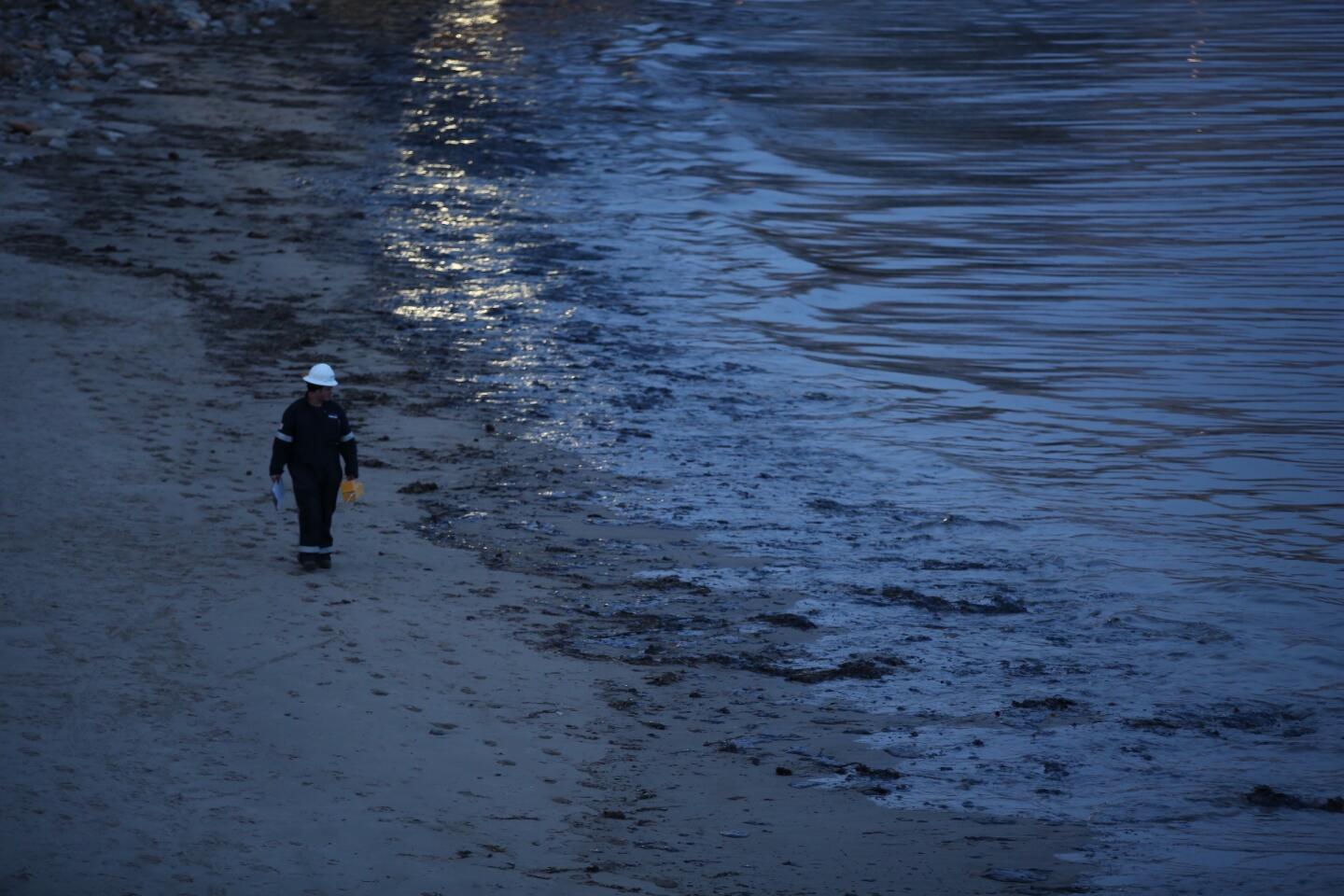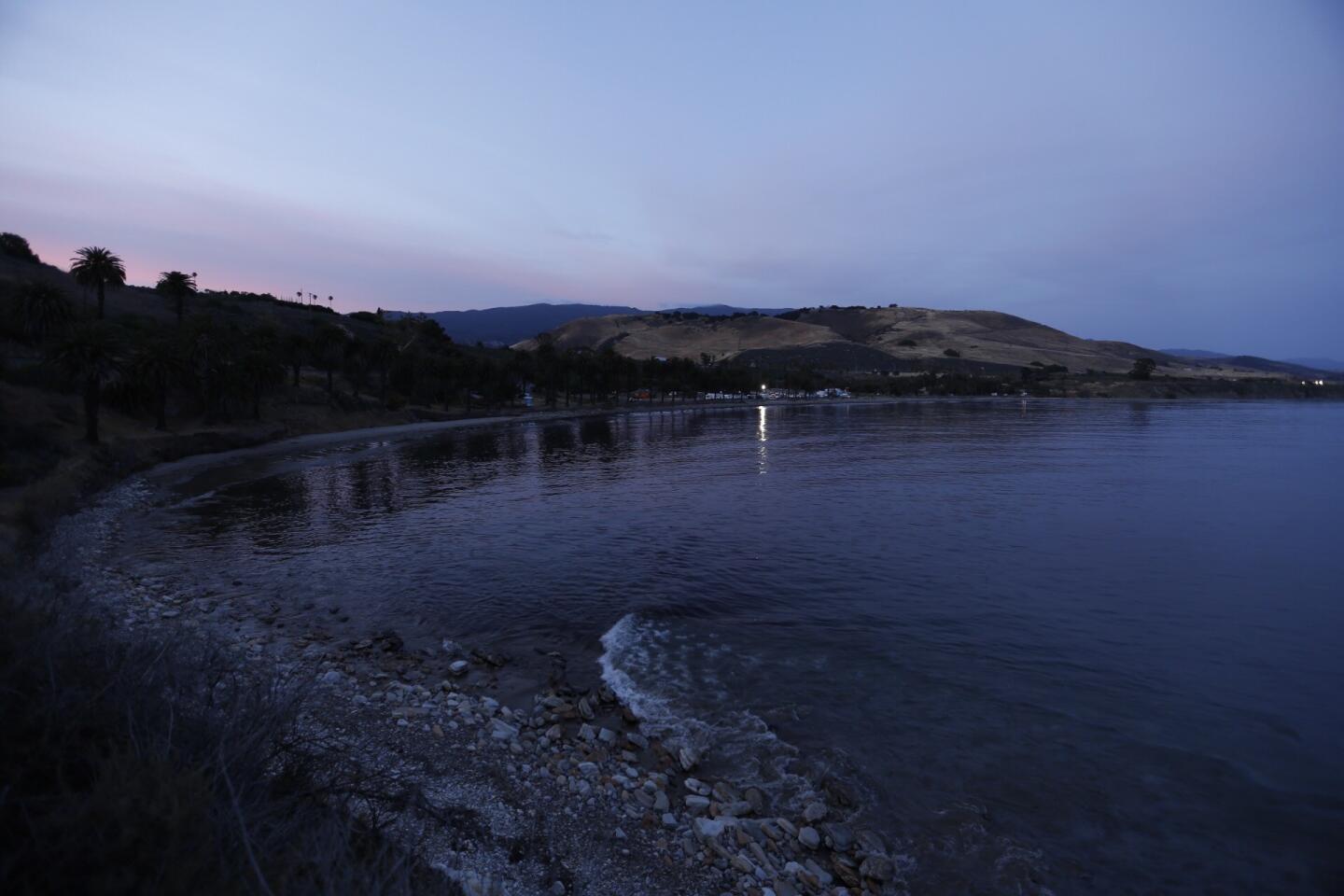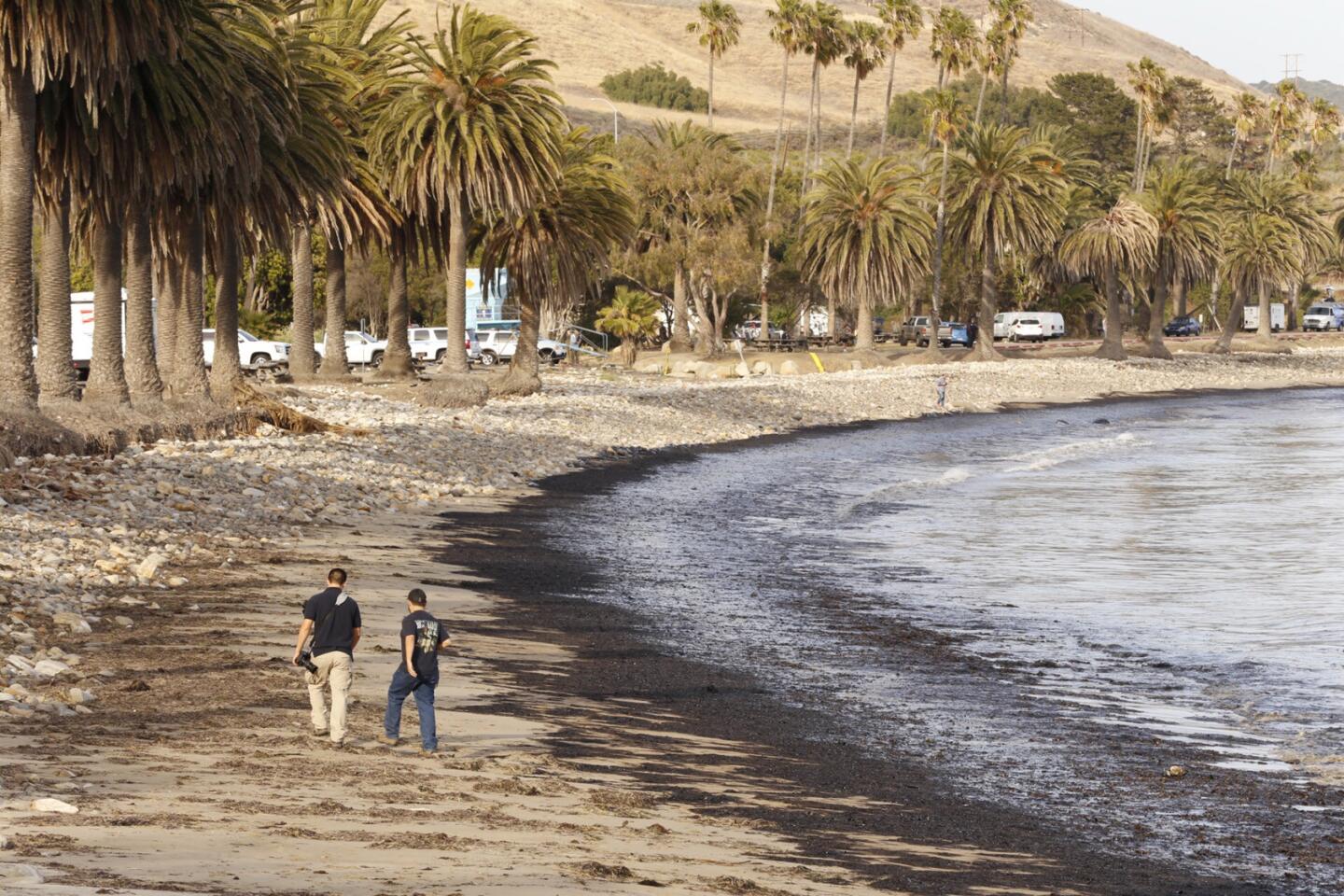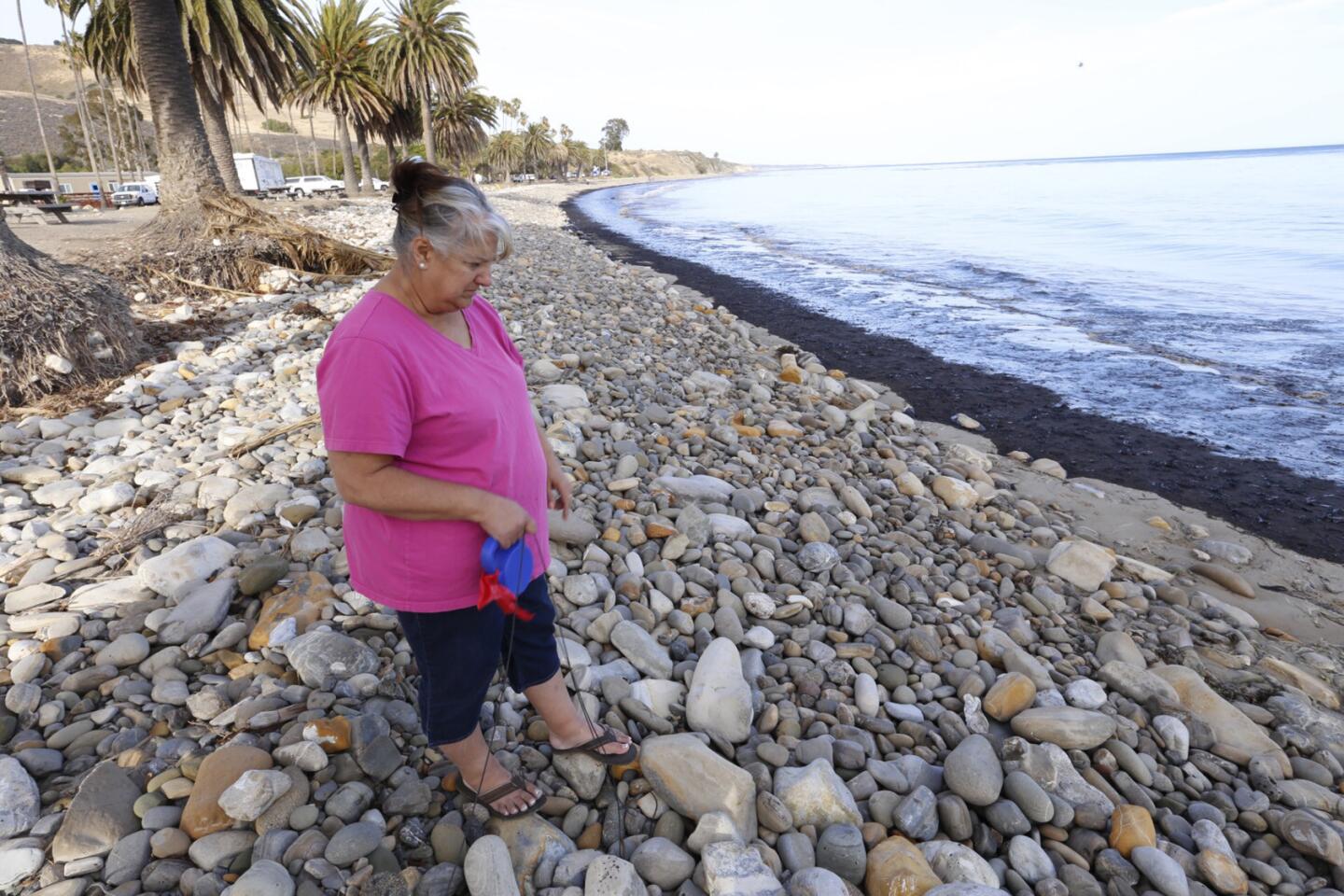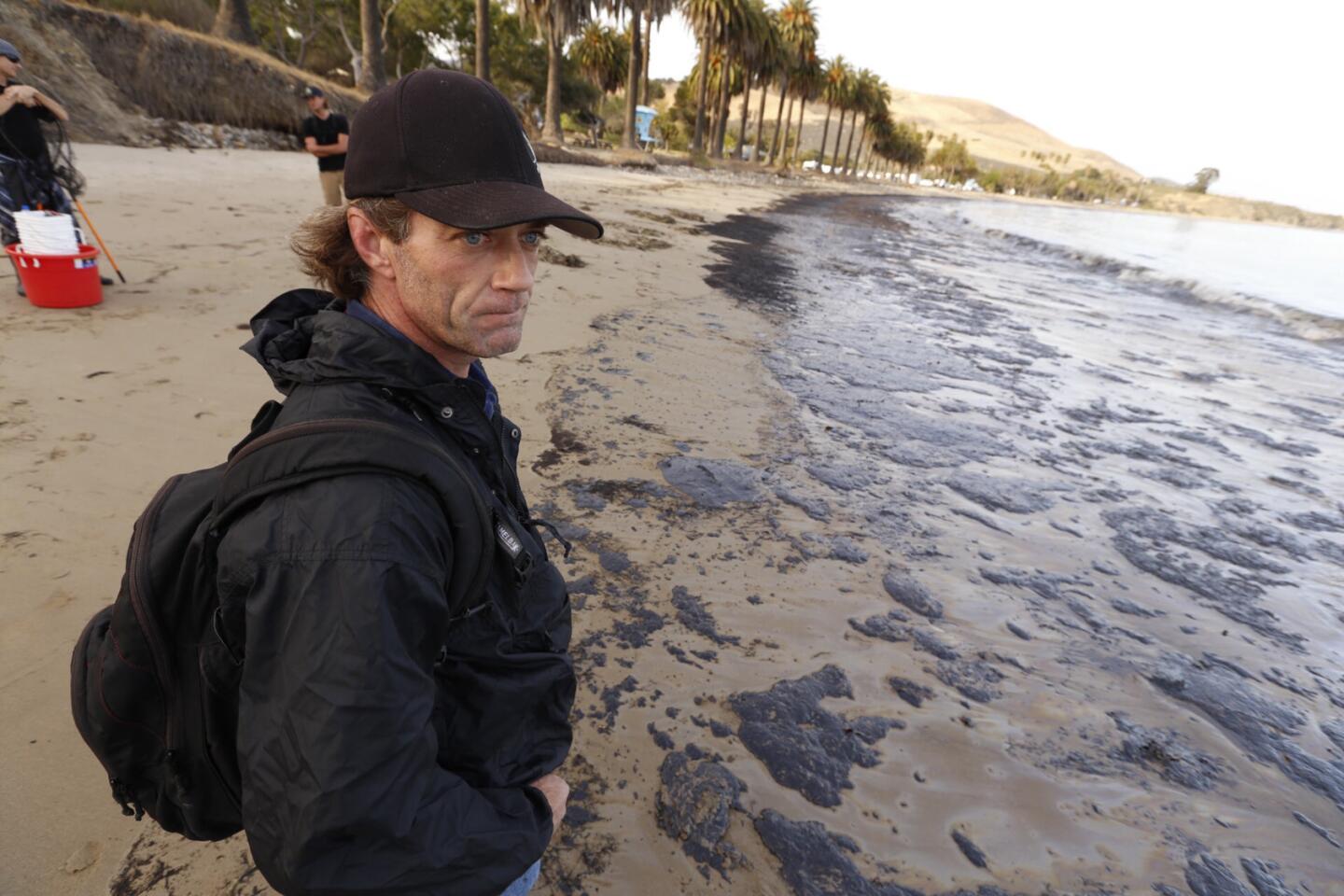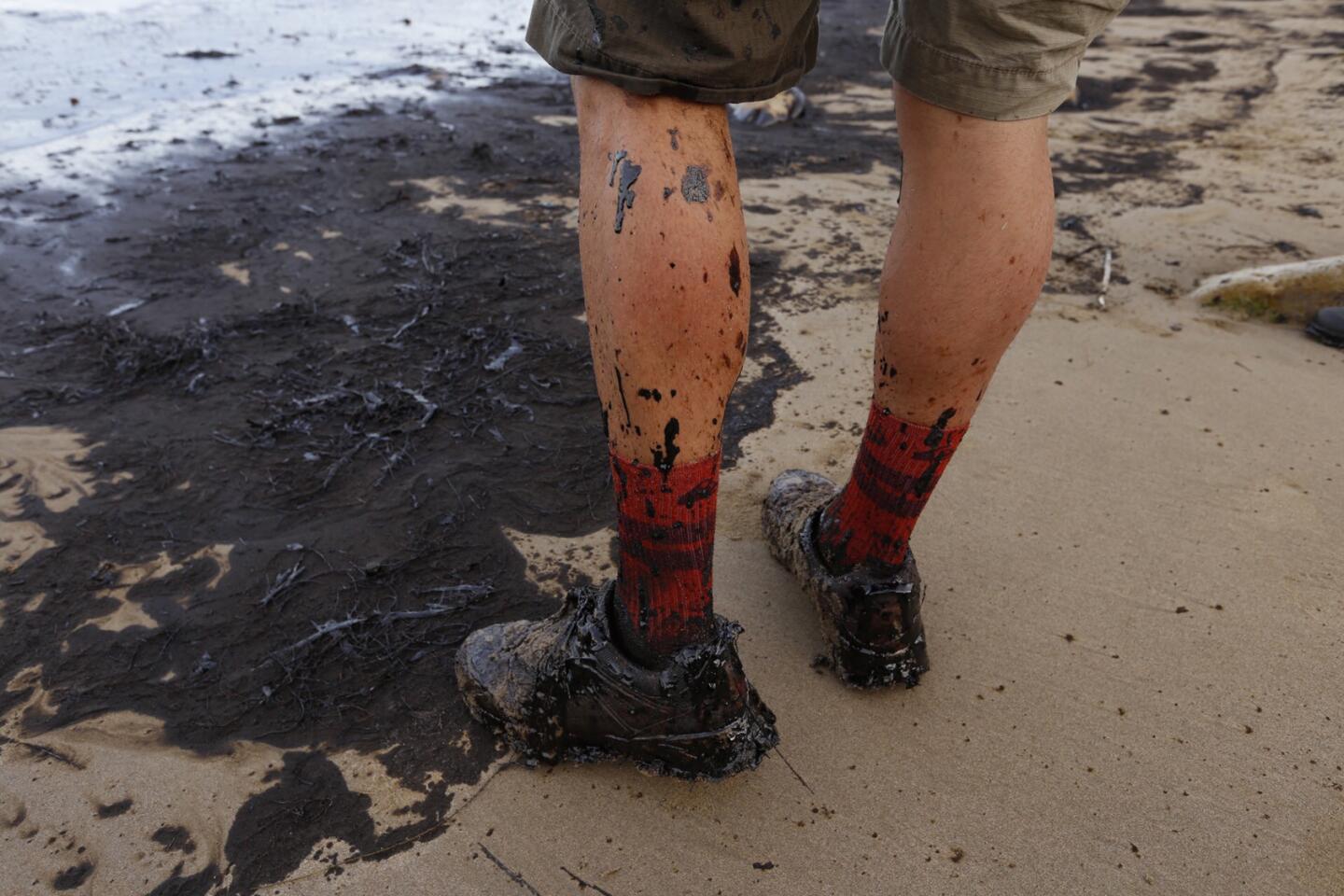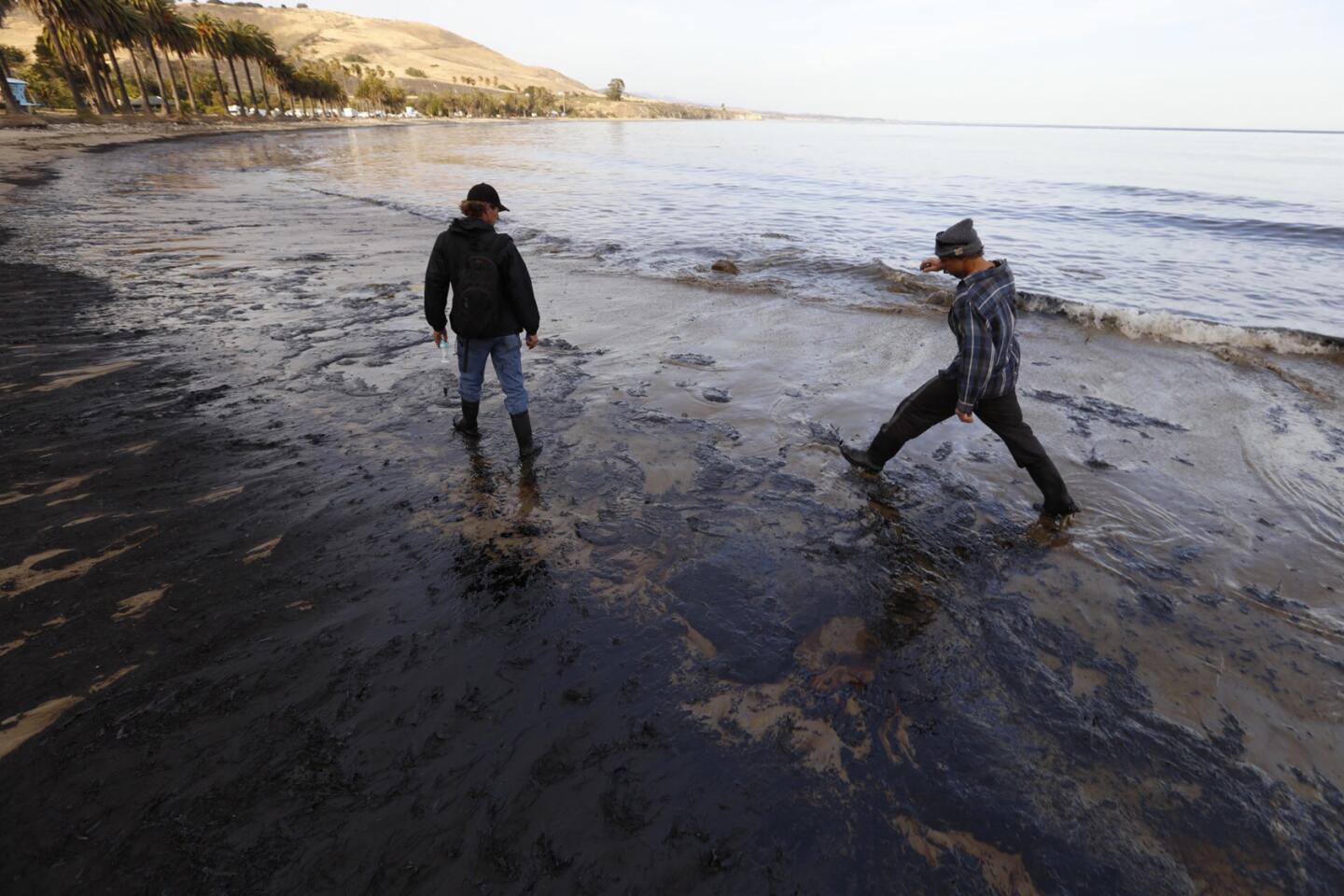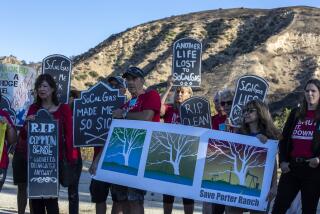With pipeline ruptured, Exxon seeks to move oil with fleet of tankers
- Share via
How do you move thousands of gallons of crude a day with a key oil pipeline out of commission indefinitely?
Exxon Mobil officials are seeking permission to truck the oil through Santa Barbara County after a ruptured pipeline sent oil spilling into the Pacific Ocean and brought the company’s oil transportation operations to a halt.
The company told Santa Barbara County officials Thursday that it wants to send a fleet of 5,000-gallon tanker trucks along U.S. 101 at a frequency of eight trucks per hour, 24 hours a day, every day, said Kevin Drude, the head of the county’s energy division.
“They are totally pinched off right now,” Drude said. “The only way out of the county is through that pipeline network.”
Crude oil typically moves from Exxon Mobil’s three offshore platforms through a 10.6-mile pipeline owned by Plains All American Pipeline. That pipeline broke May 19 and spilled up to 101,000 gallons of oil along the Gaviota coast.
Since then, Exxon has reduced its oil production from 30,000 to 8,500 barrels a day and stored its crude in tanks at a facility in Las Flores Canyon near U.S. 101. But the company has not been able to move the oil. Now, it has about two weeks worth of storage space left, said Glenn Russell, Santa Barbara County planning and development director.
Russell said he anticipates a separate request to truck oil from the petroleum company Freeport-McMoRan, which has also been shut in because of the spill.
Since the 1970s, Santa Barbara County has increasingly restricted the transportation of oil by truck and almost exclusively requires pipelines to be used instead. Only a handful of oil companies in the inland northern parts of Santa Barbara County still move oil by truck, Russell said.
“The safest way is through a pipeline,” he said. Russell said his staff will review the application and make a decision by Monday.
Exxon has proposed building a truck loading ramp at the company’s Las Flores facility to take the oil north on U.S. 101 to other refineries in California, including one in San Luis Obispo, where the crude would be lightly refined, Drude said.
Exxon spokesman Richard Keil said the company wants to use trucks to move oil until the pipeline is operational again, which could be months.
“We need to move our product by truck to serve the energy needs of Californians and the demands of the refineries we supply,” he said.
Line 901, the ruptured section of pipe, transports oil from Las Flores to a pump station in Gaviota, where it meets Line 903. From there, the crude oil travels 128 miles to Kern County.
Plains All American Pipeline shut down both pipelines after the spill.
Federal regulators said Wednesday that Line 901 was extensively corroded. Between 45% and 74% of the pipe wall’s original thickness had been stripped away.
The section of pipe that broke had worn down to 1/16 of an inch, and investigators found a 6-inch crack along the bottom of the pipe, according to preliminary findings from the federal Pipeline and Hazardous Materials Safety Administration.
When the pipeline broke, about 21,000 gallons of Exxon’s crude oil spilled down a culvert and into the Pacific Ocean near Refugio State Beach.
Environmental activists oppose the proposal to truck crude across the county. They said putting large tankers full of crude on local roads is an unnecessary risk.
“We are dealing with enough right now. We don’t want another disaster,” said Linda Krop, chief counsel for the Santa Barbara-based Environmental Defense Center.
Twitter: @jpanzar
Times staff writer Julie Cart contributed to this report.
More to Read
Sign up for Essential California
The most important California stories and recommendations in your inbox every morning.
You may occasionally receive promotional content from the Los Angeles Times.
